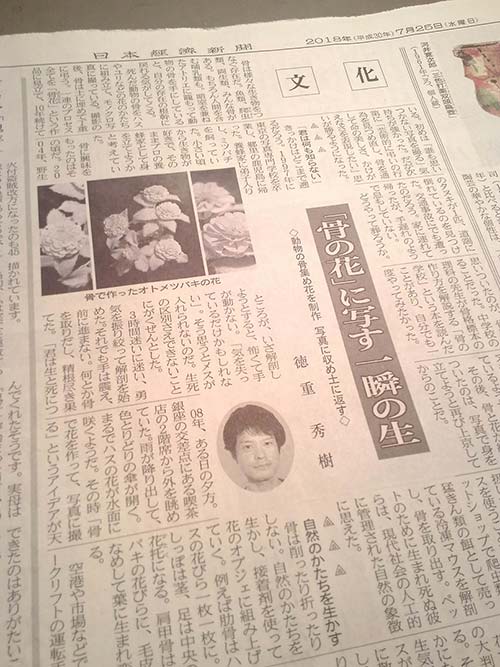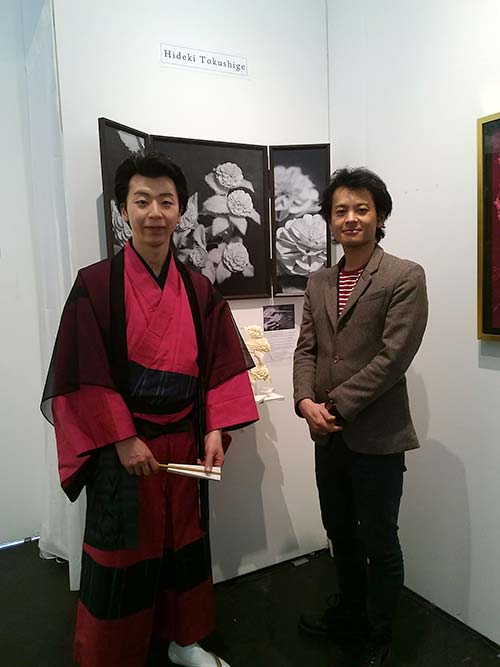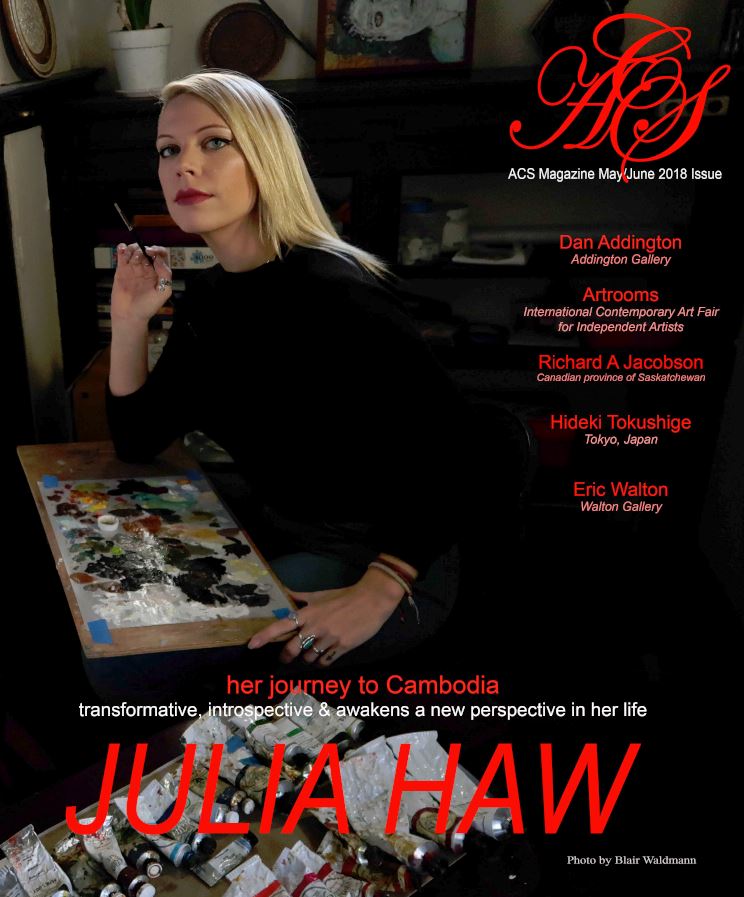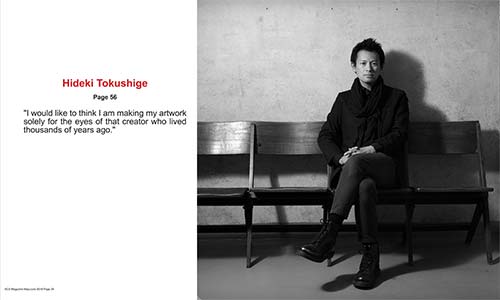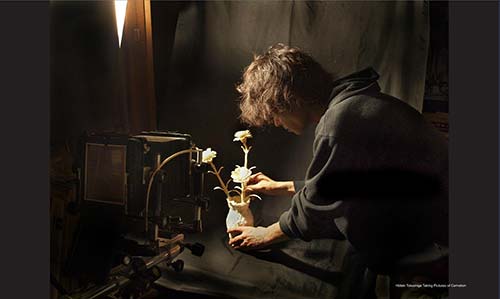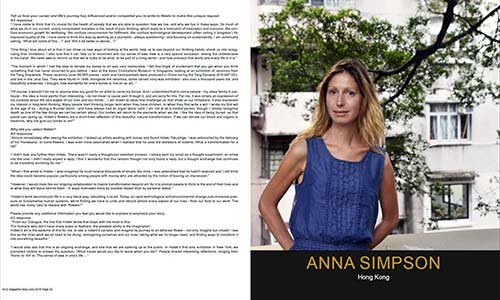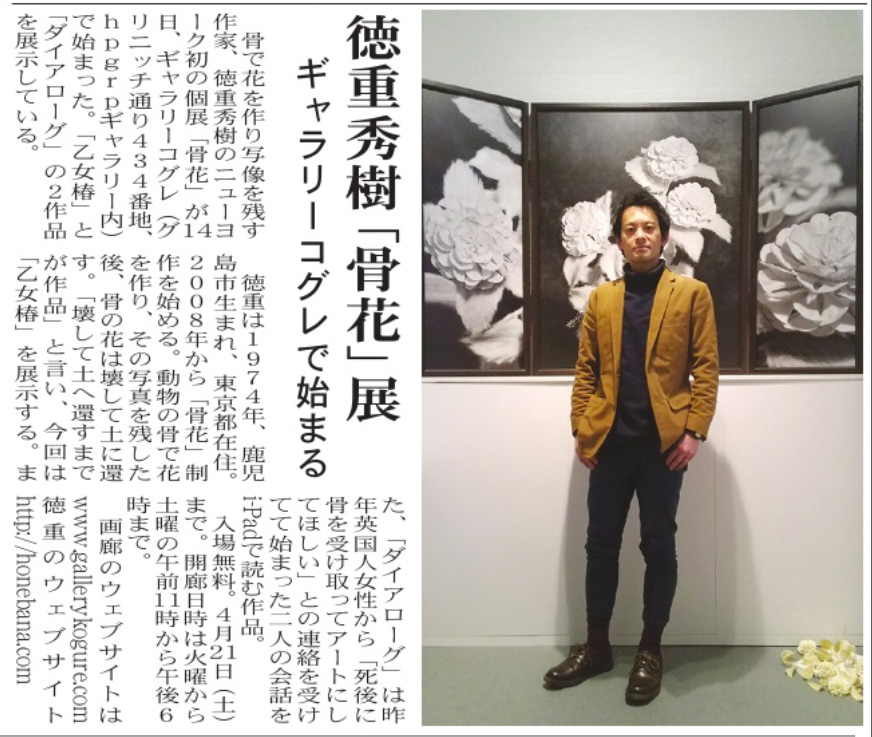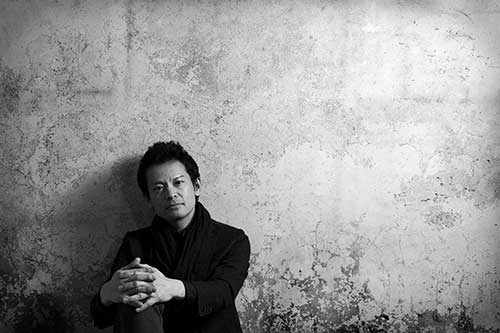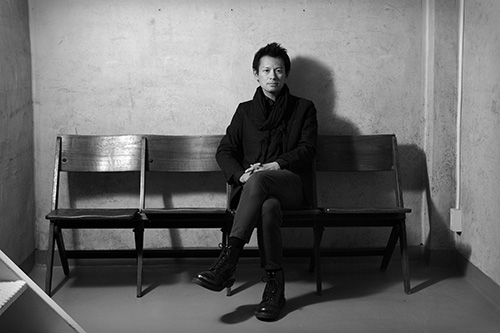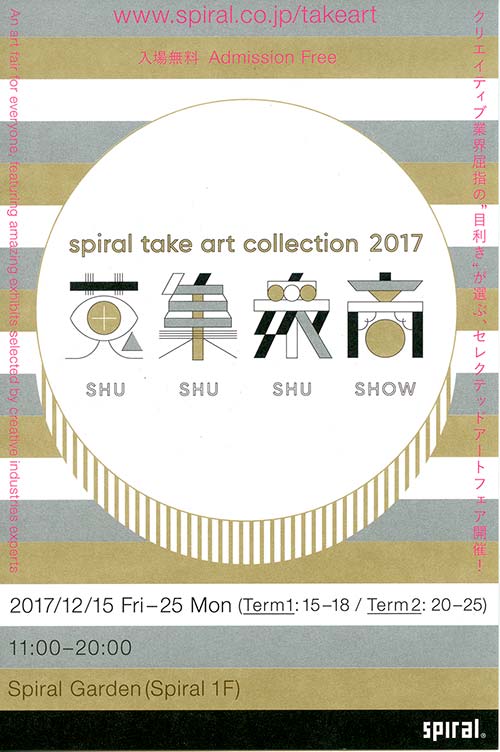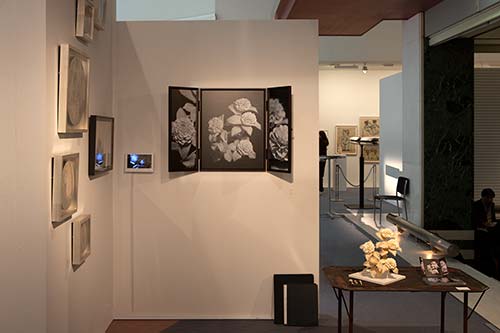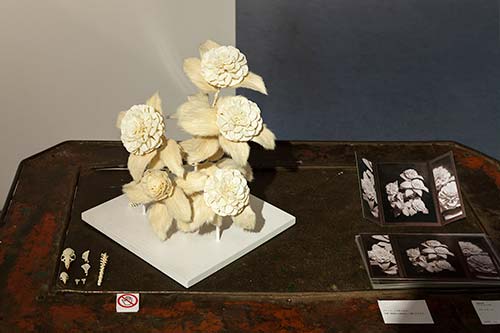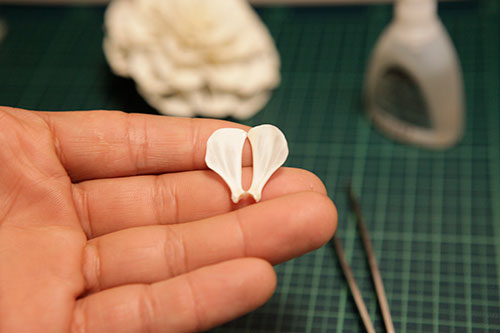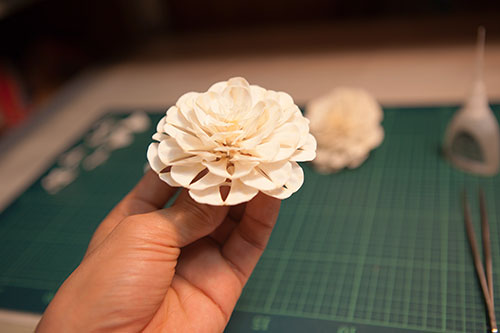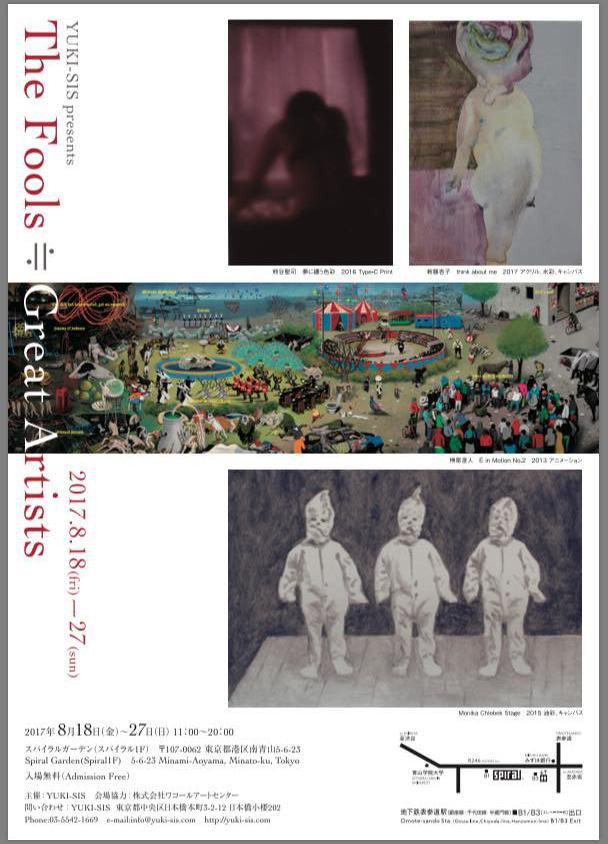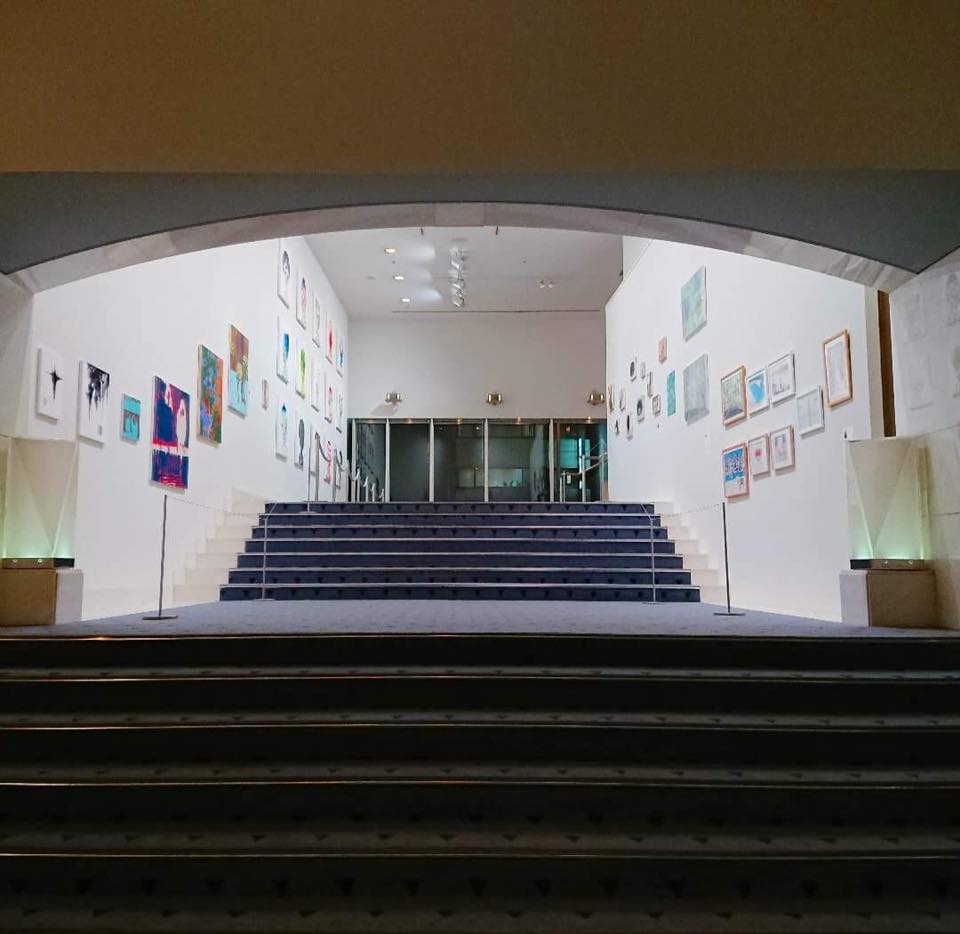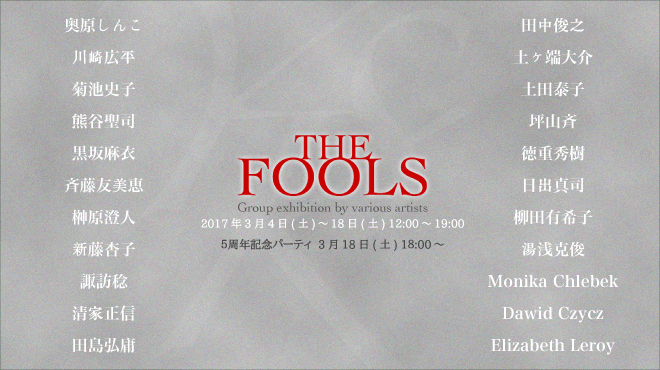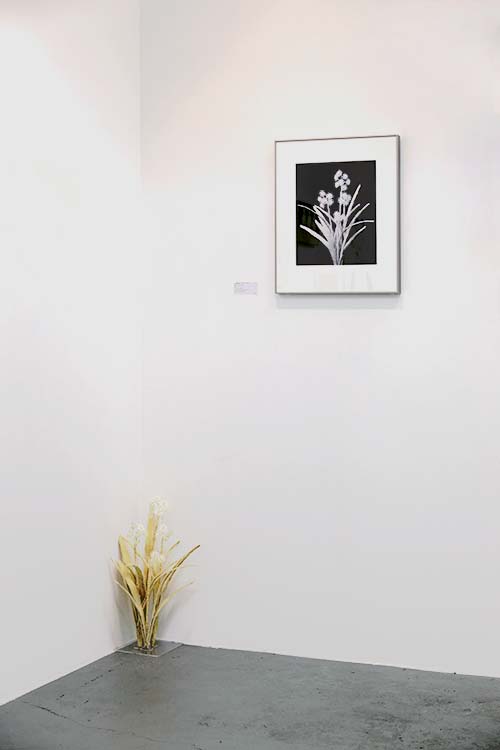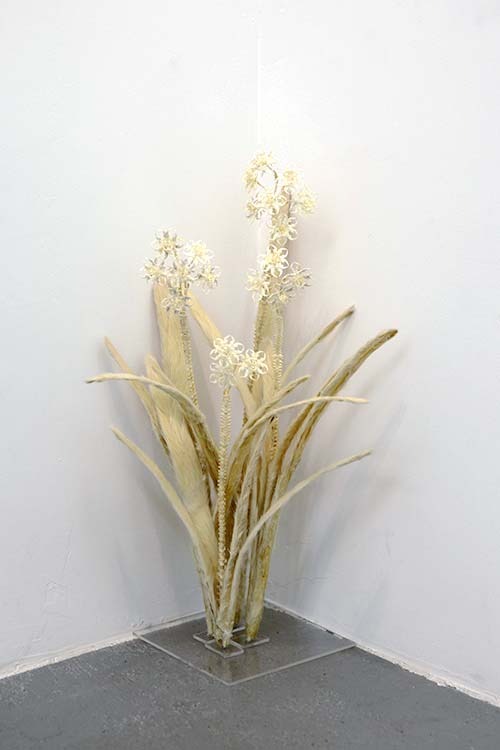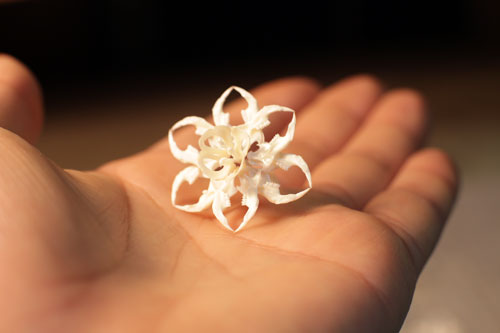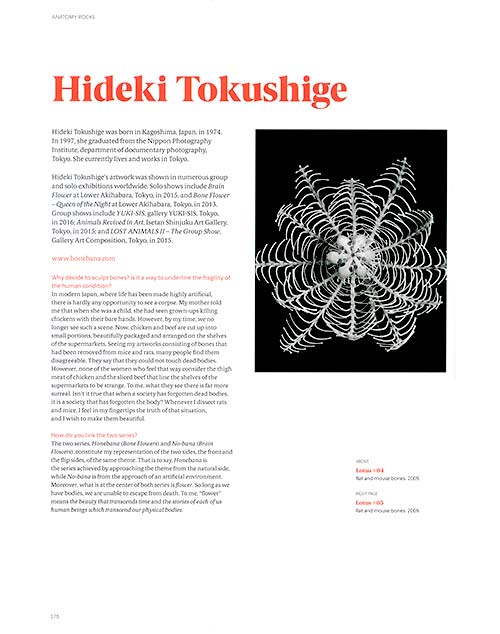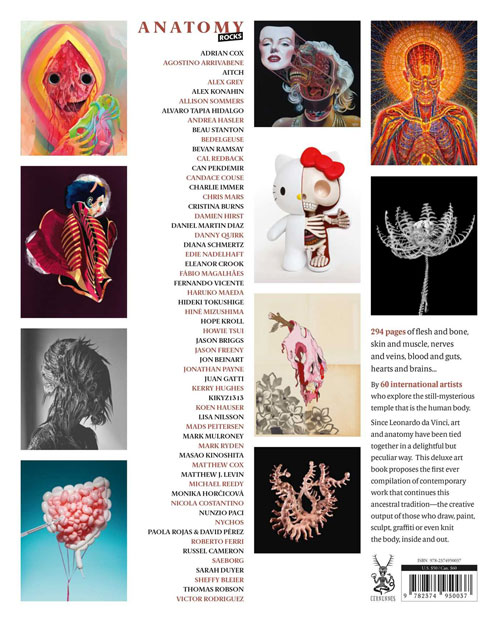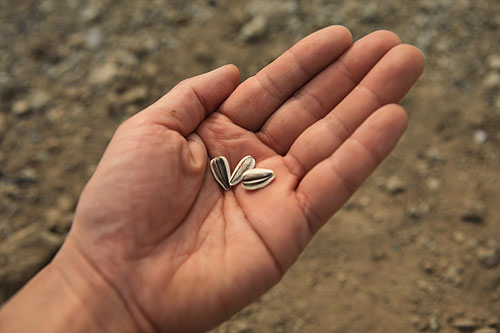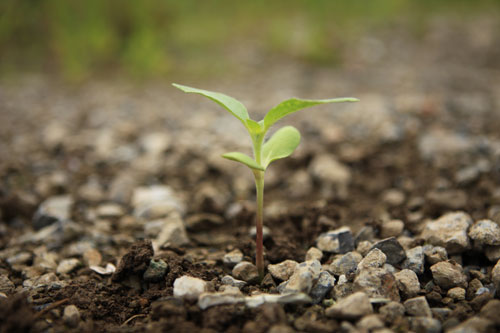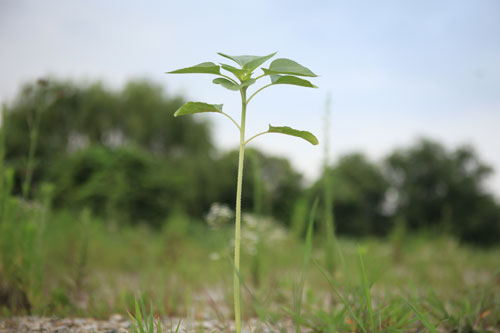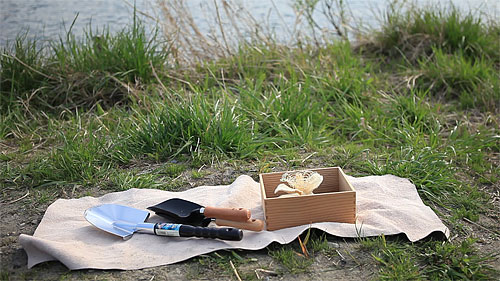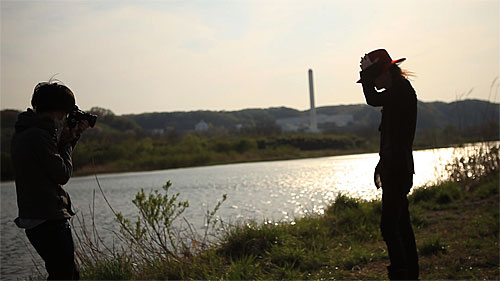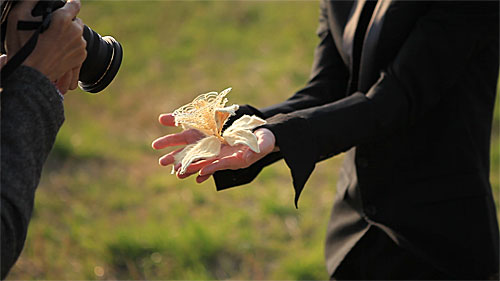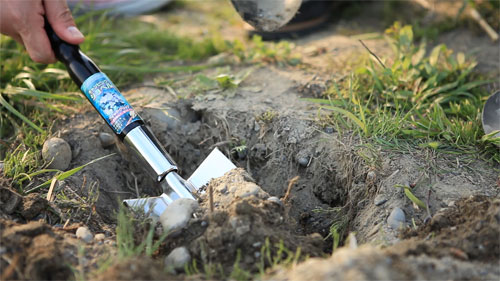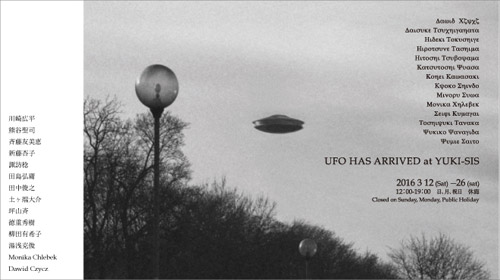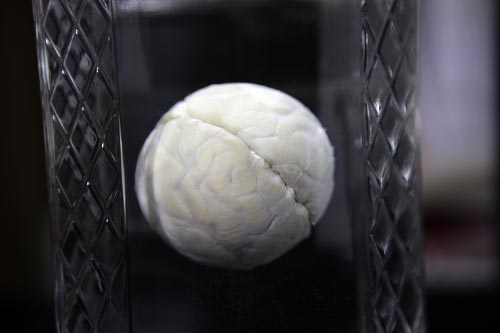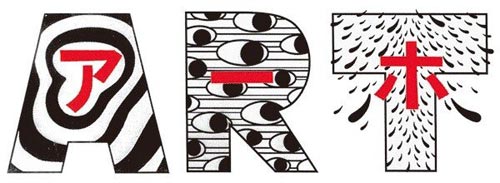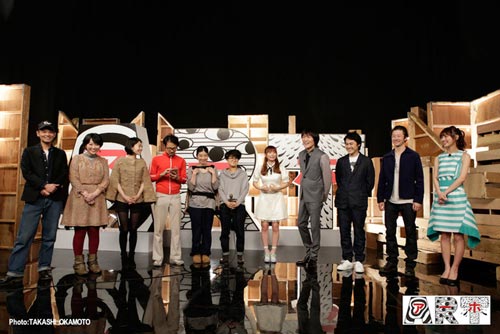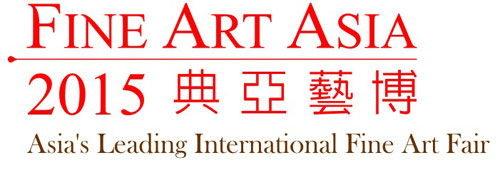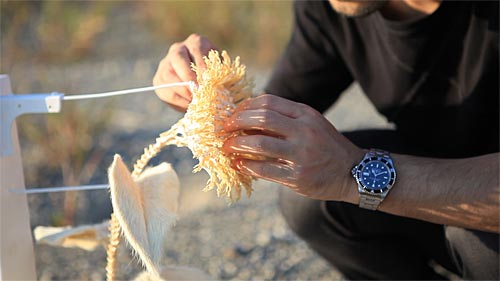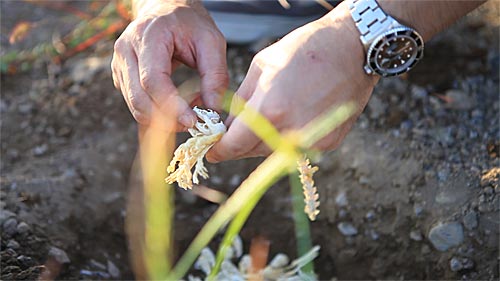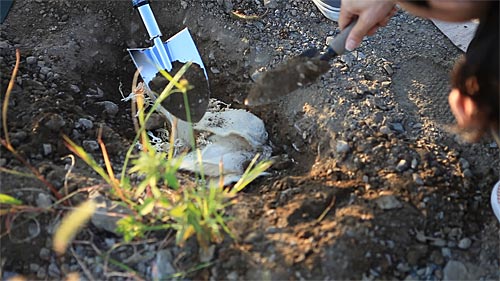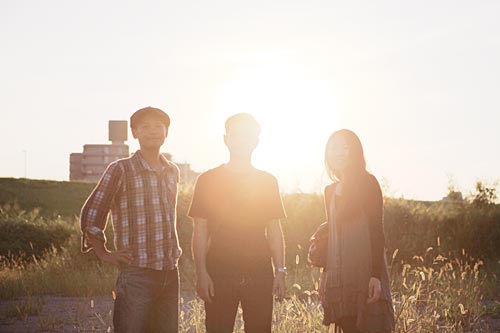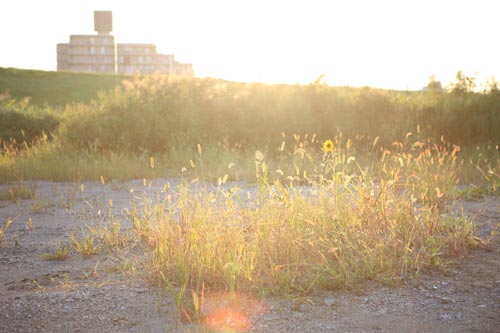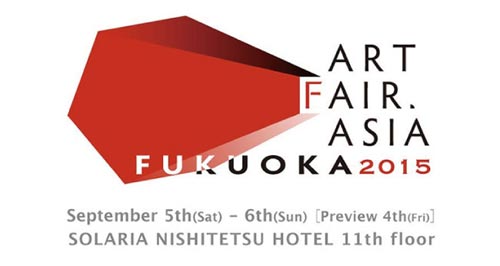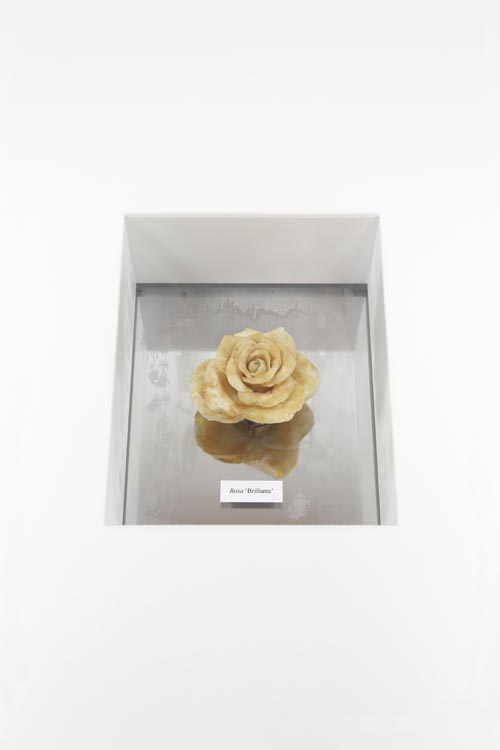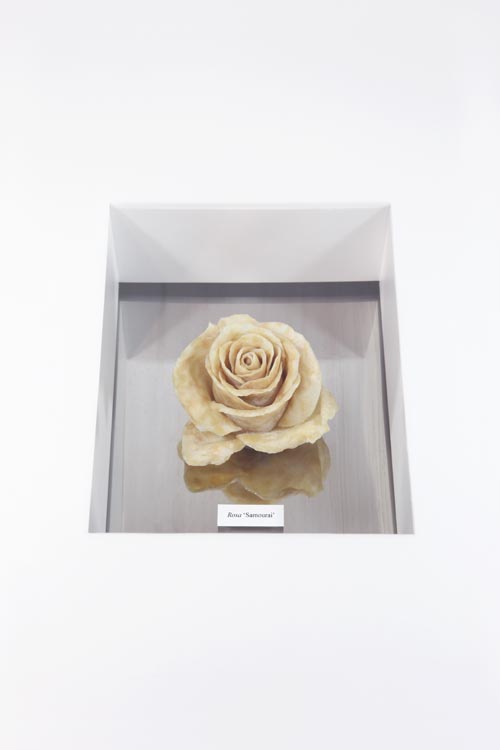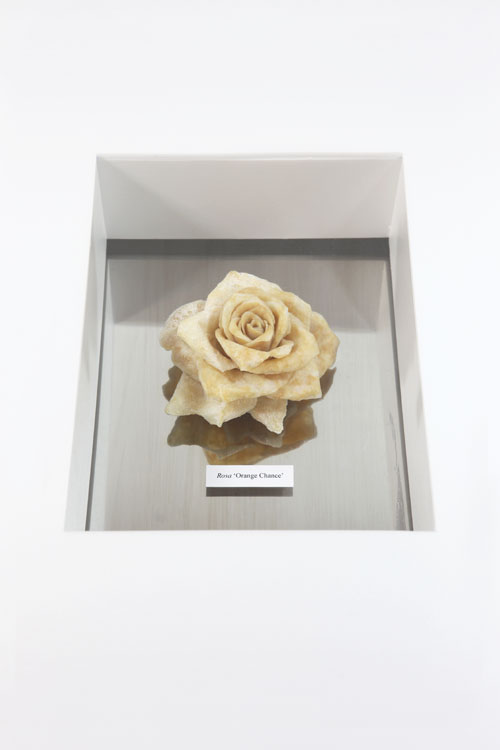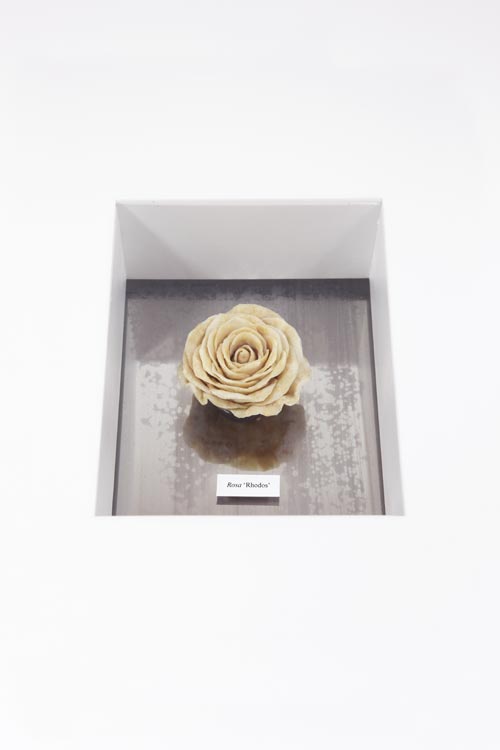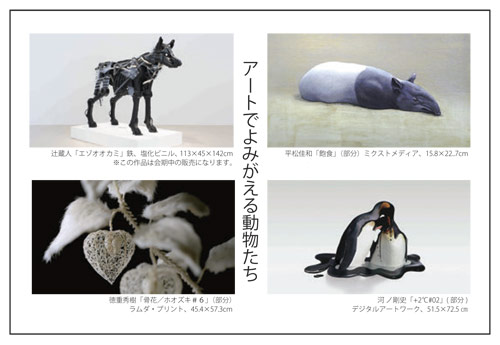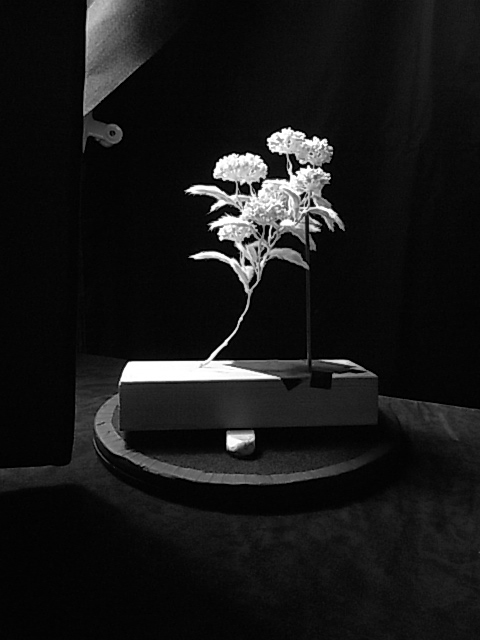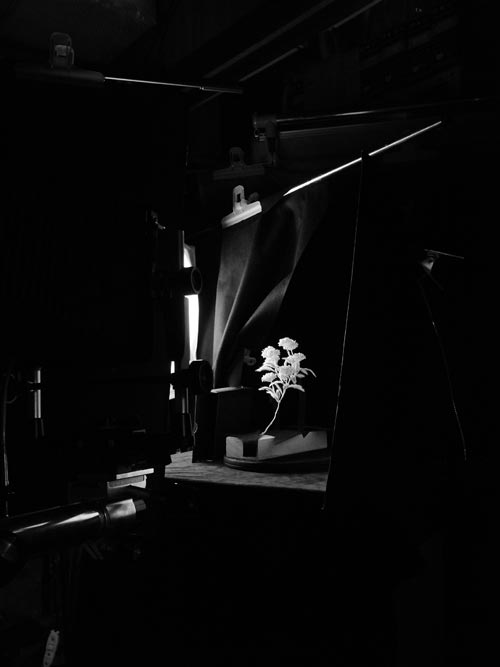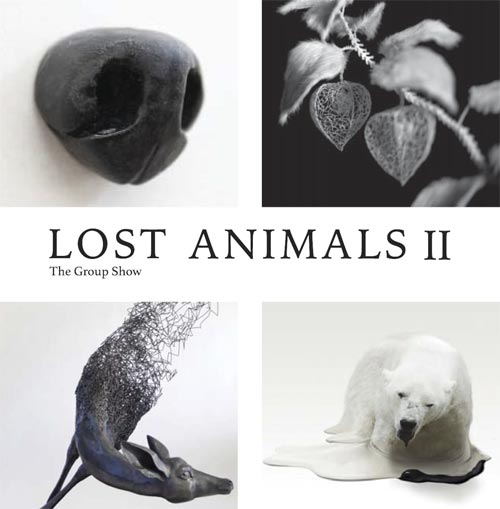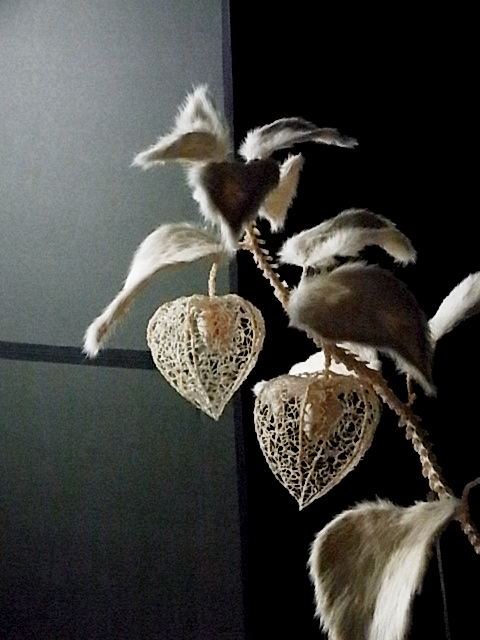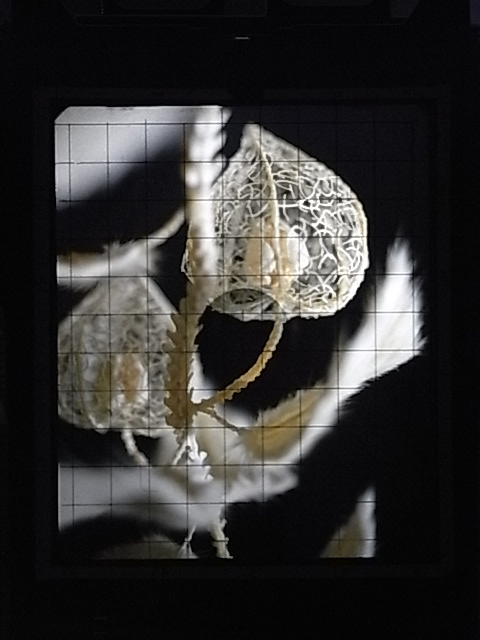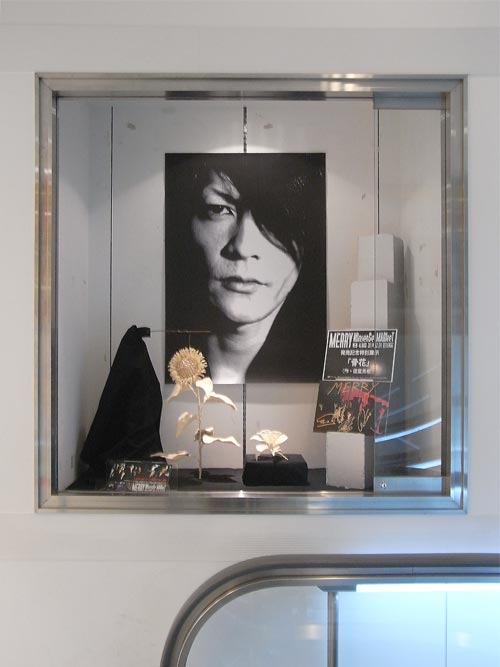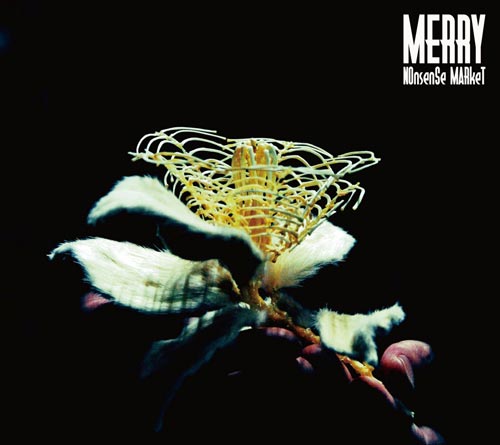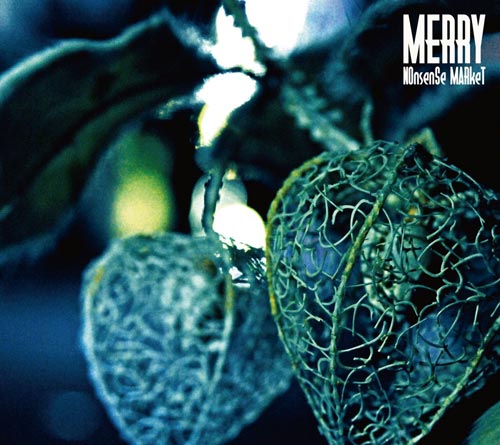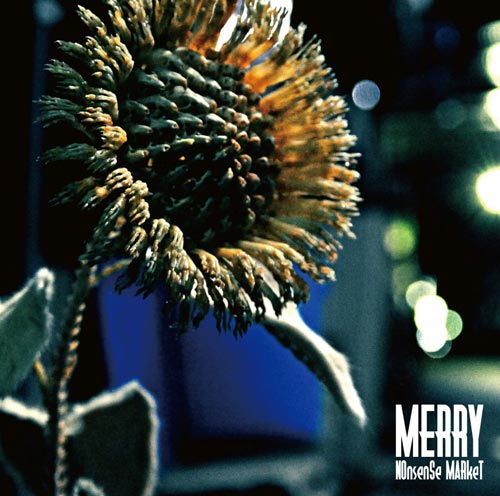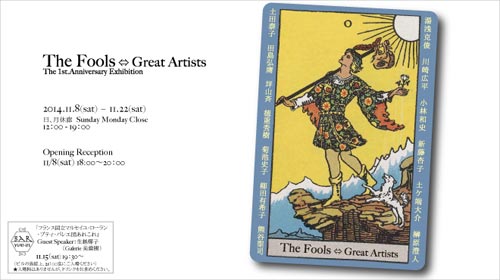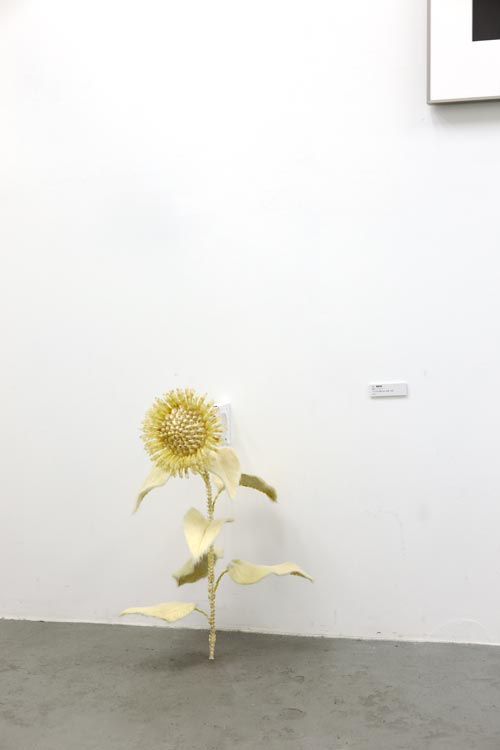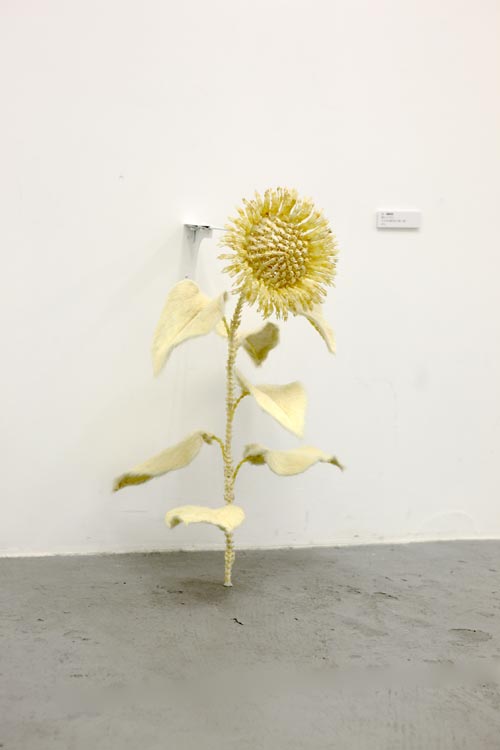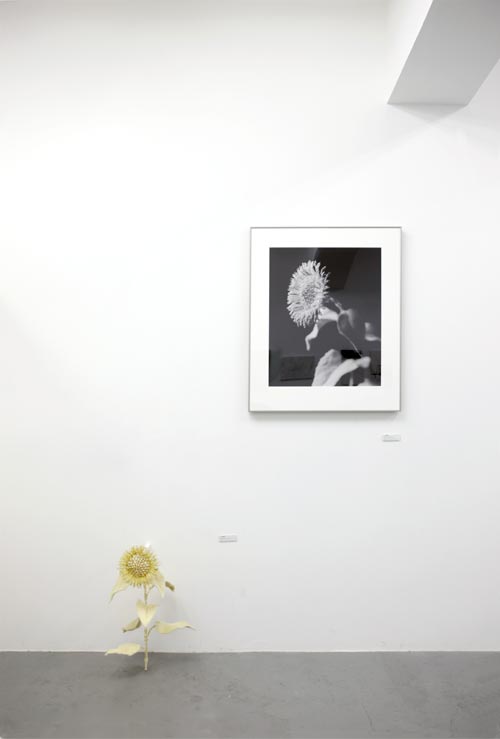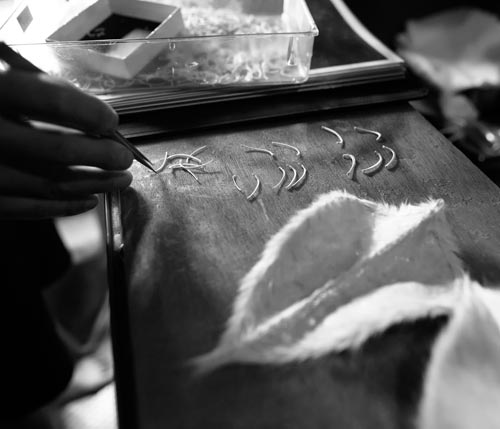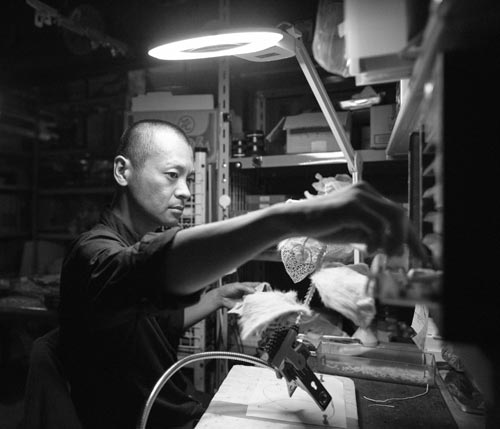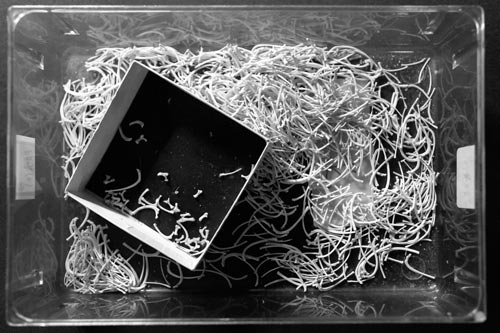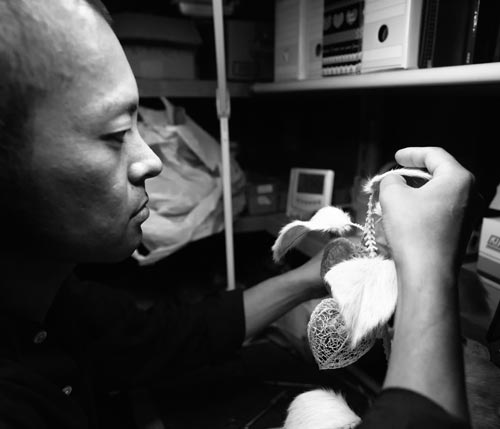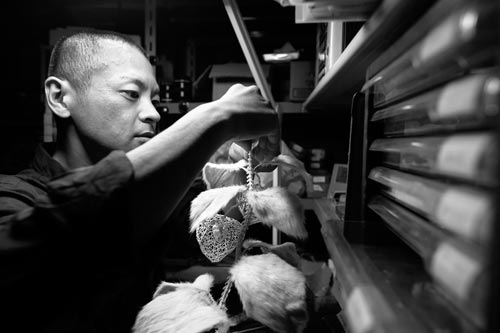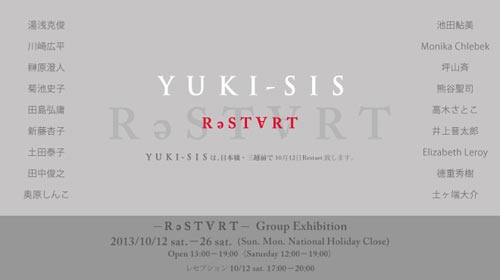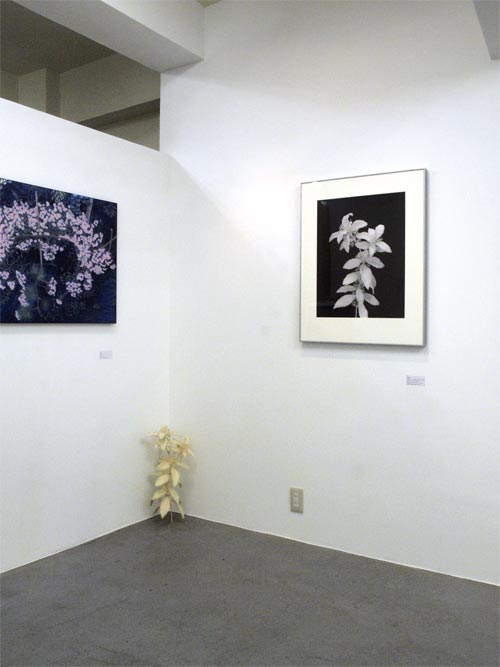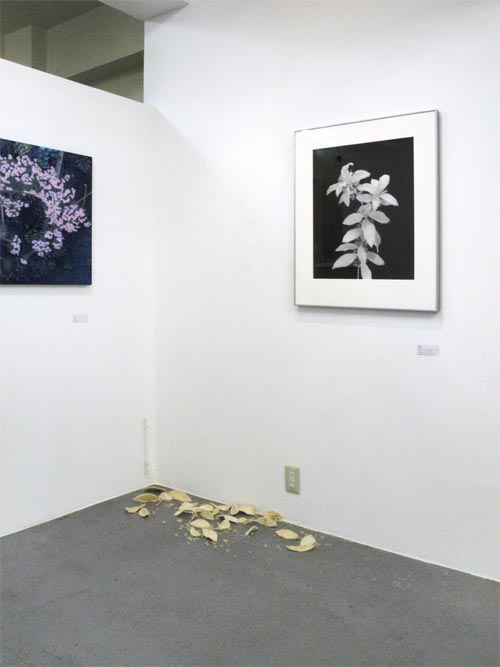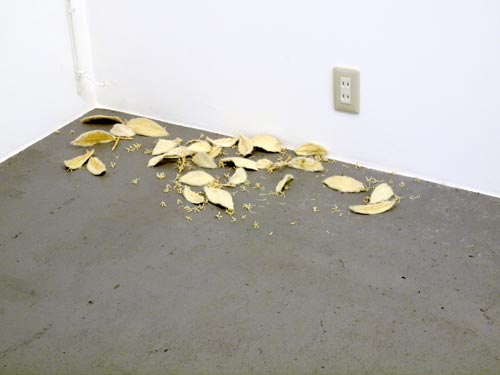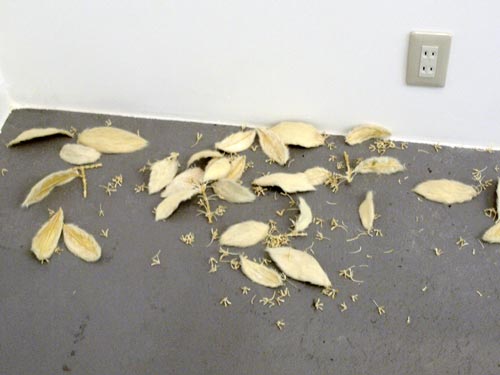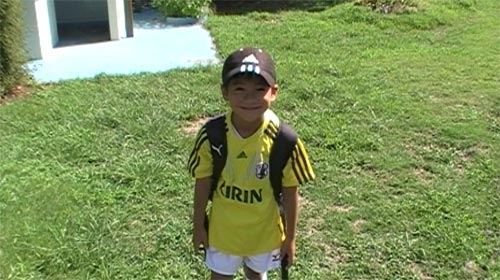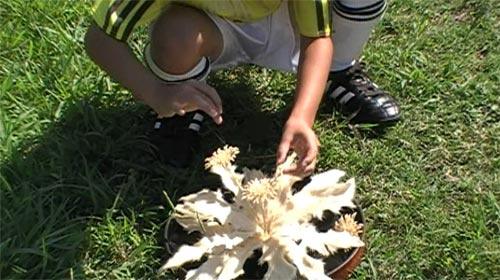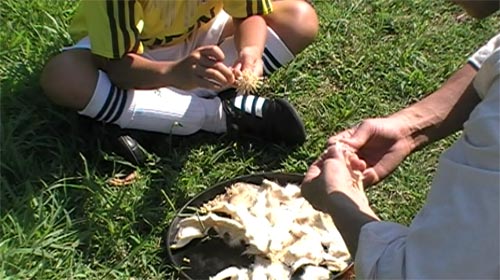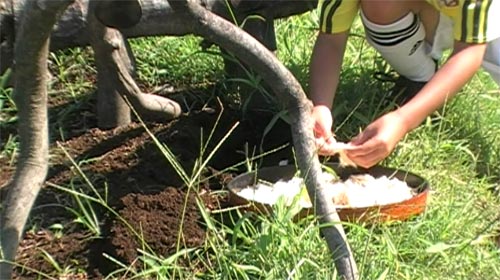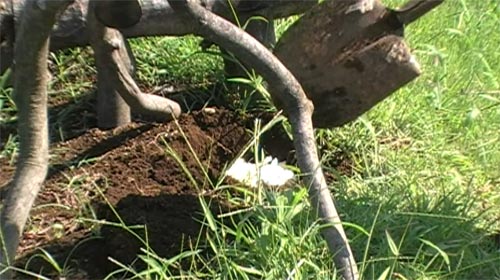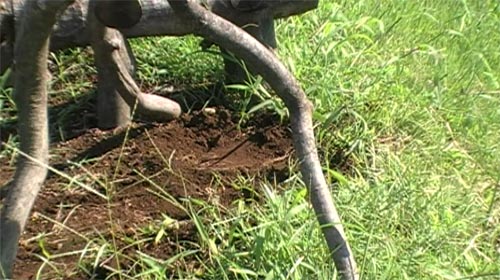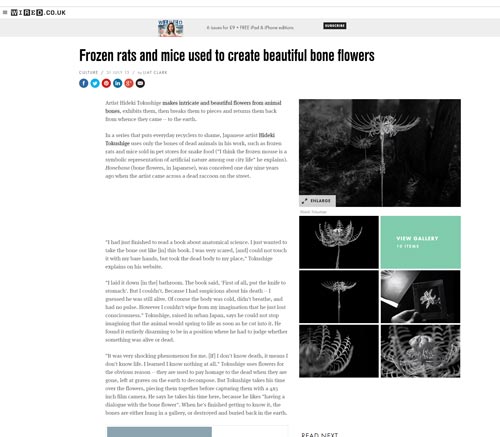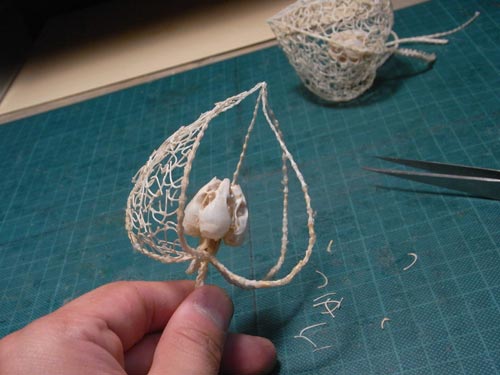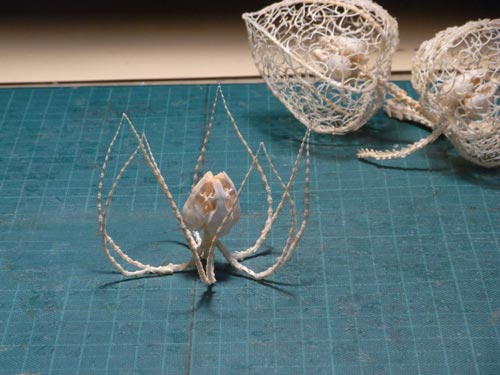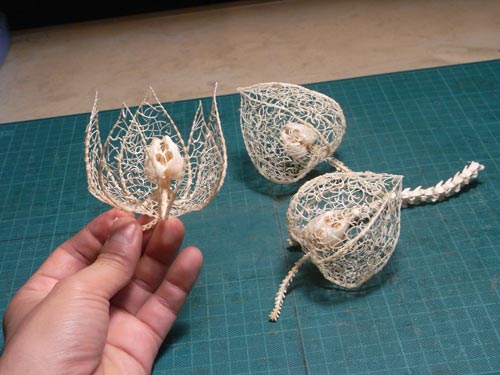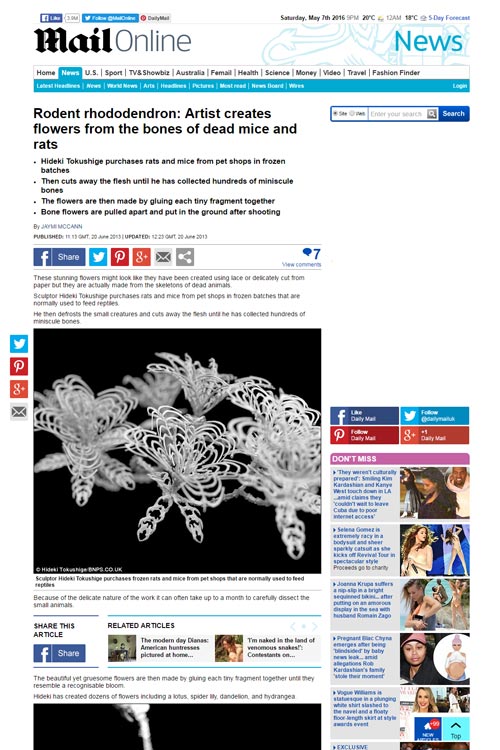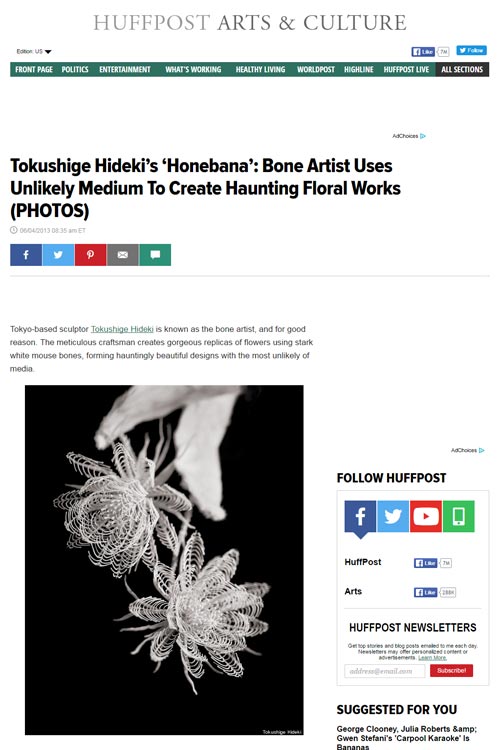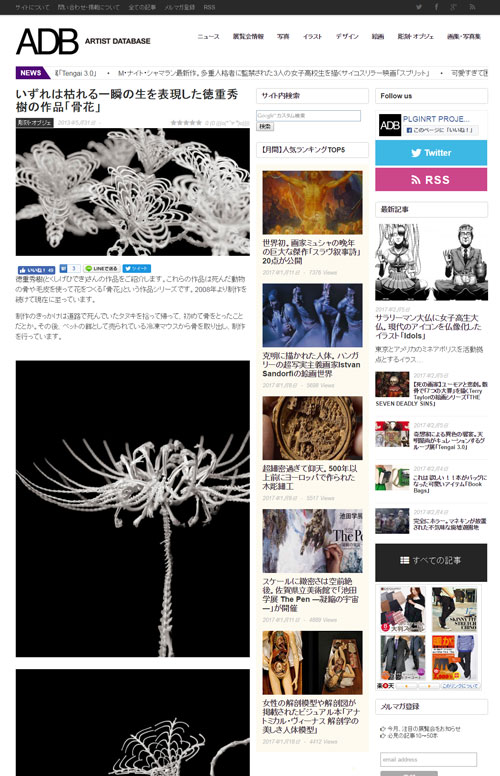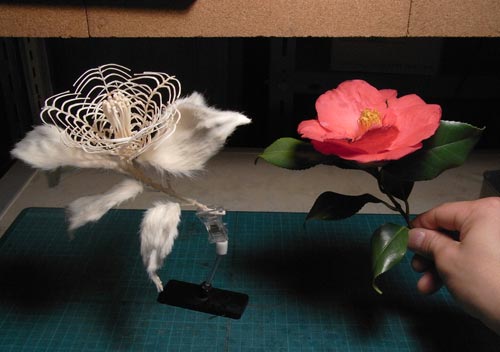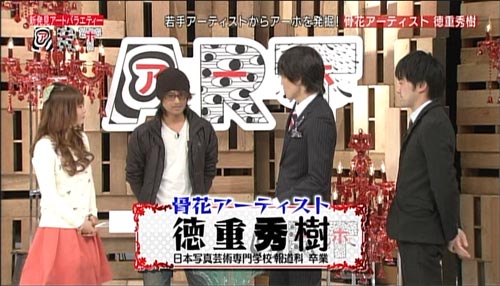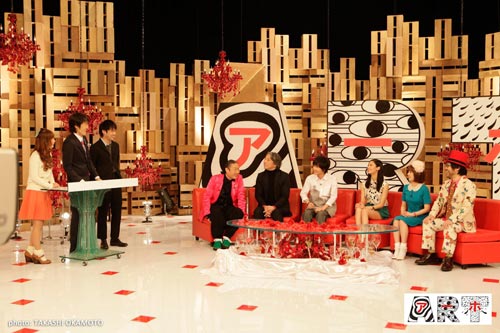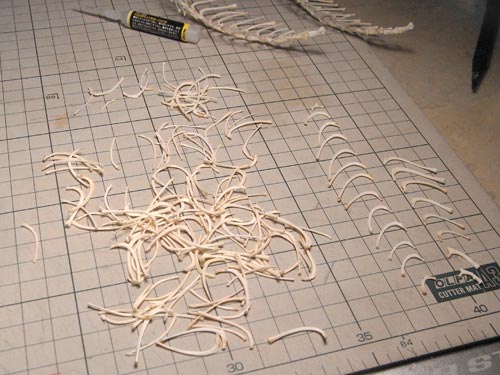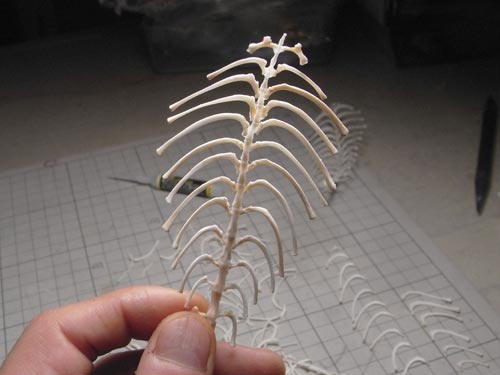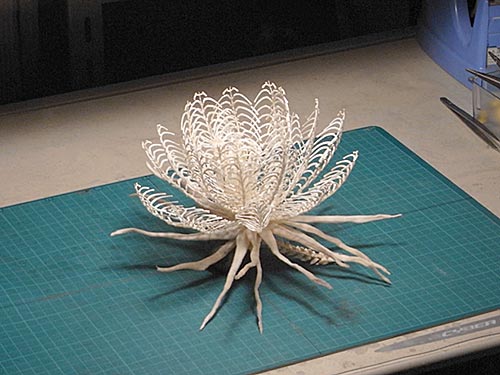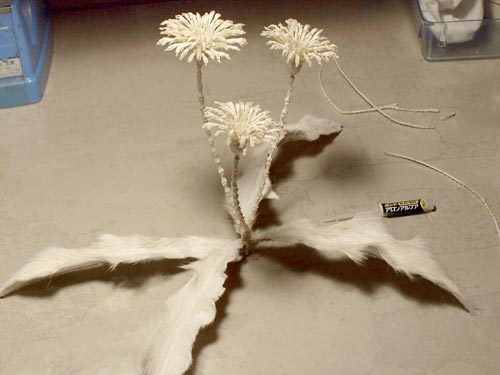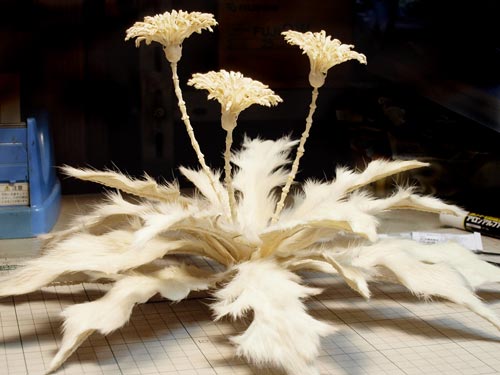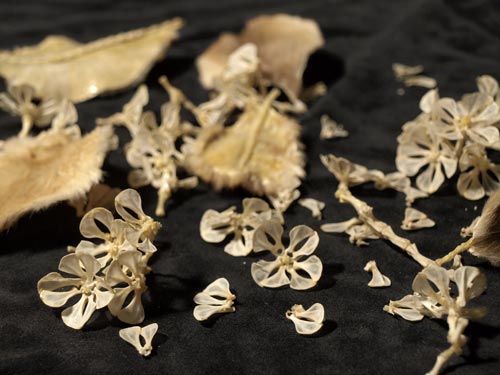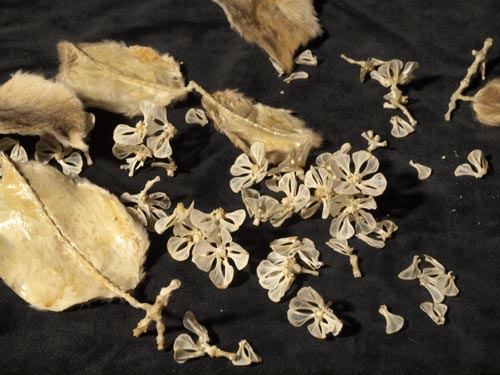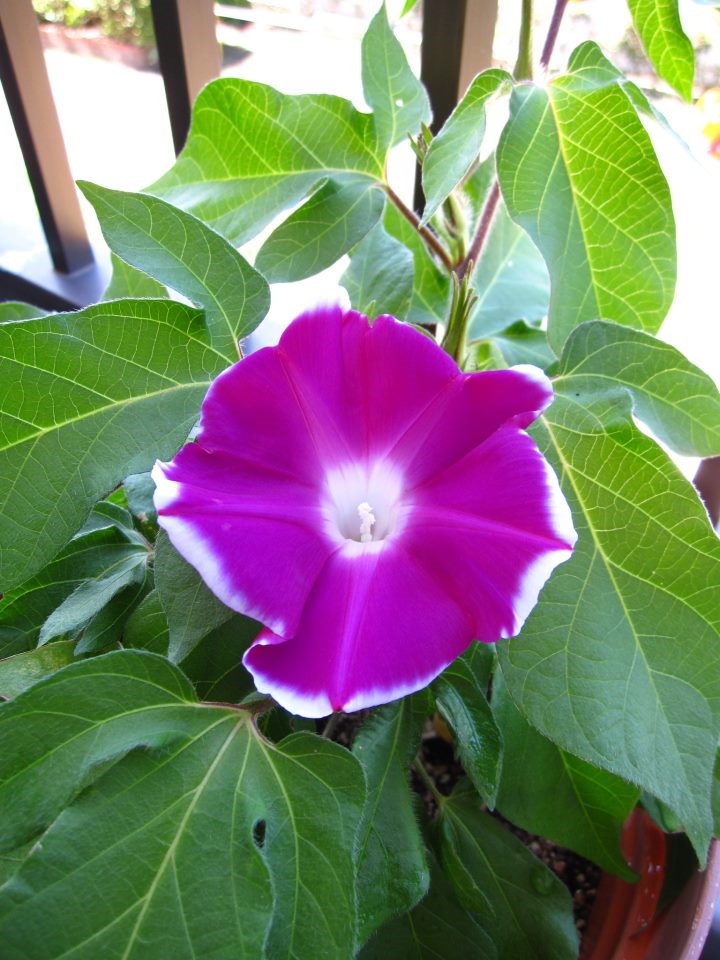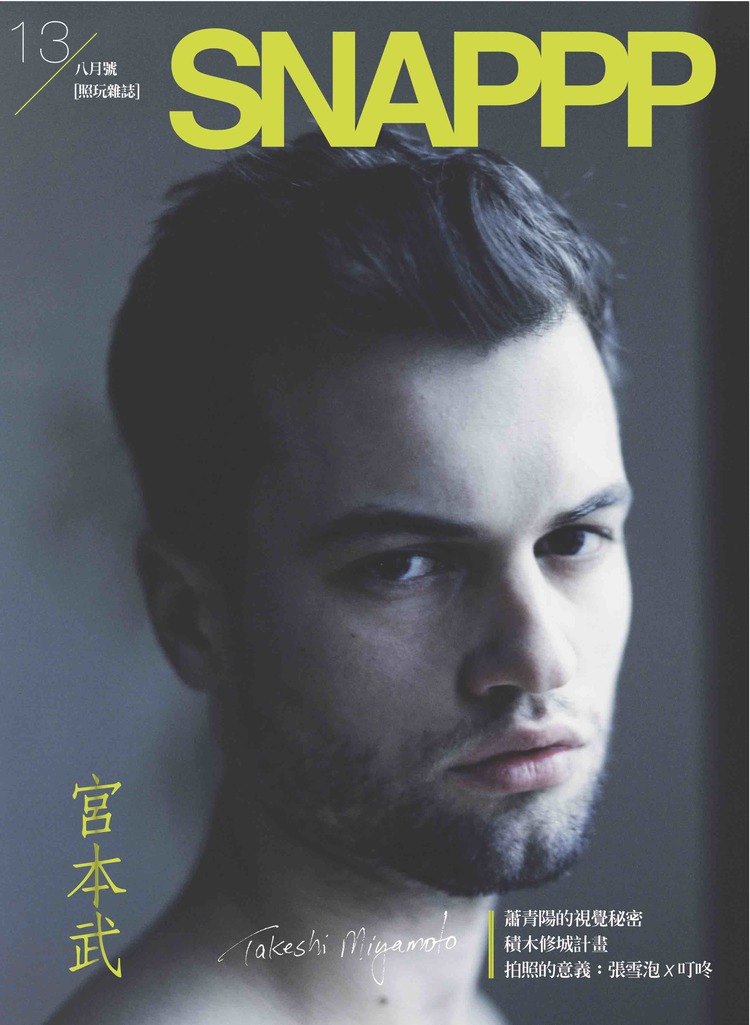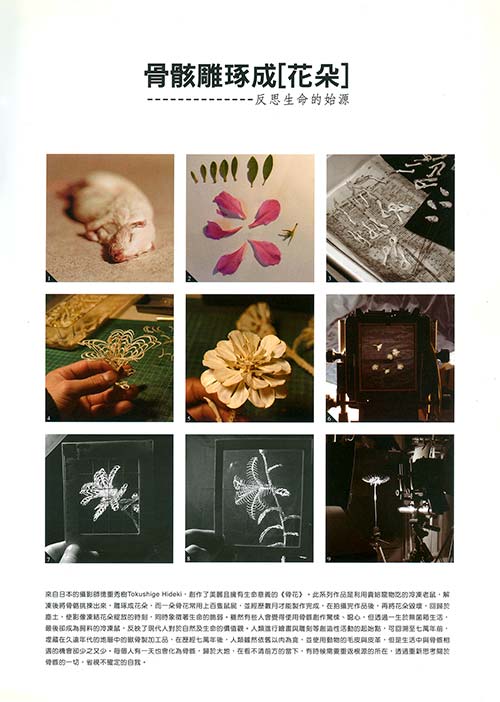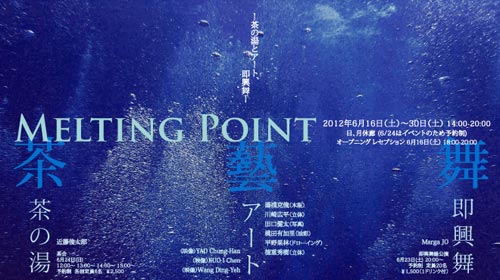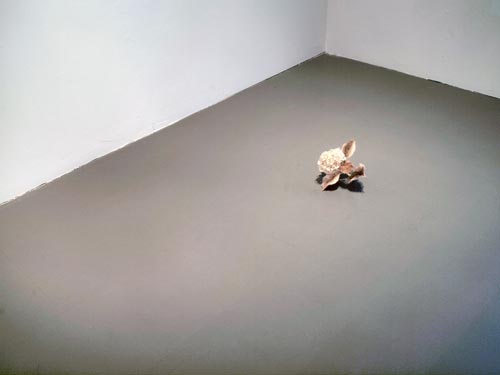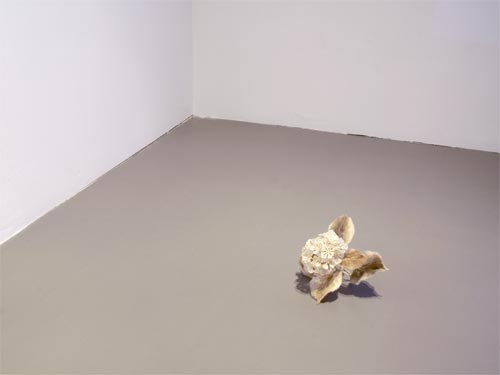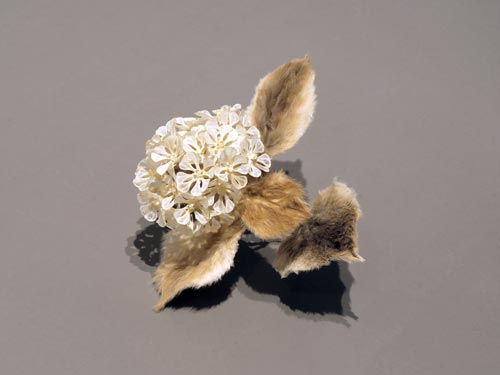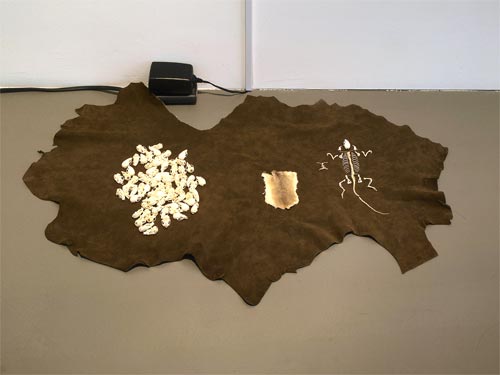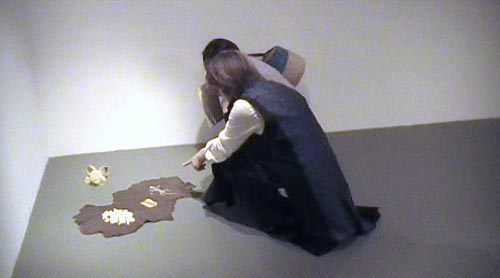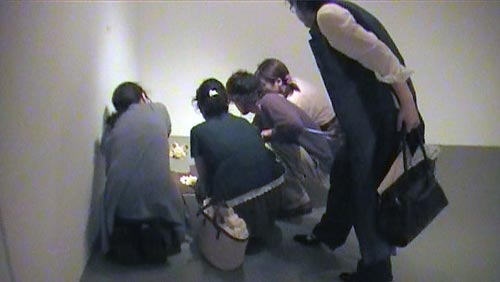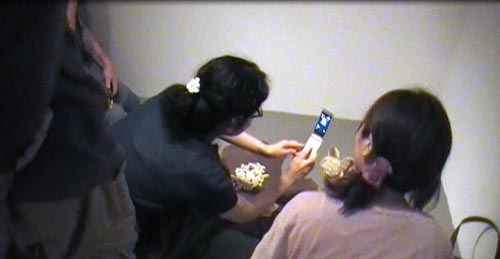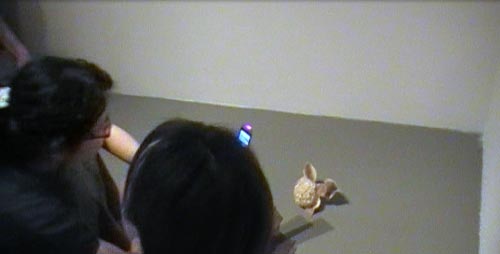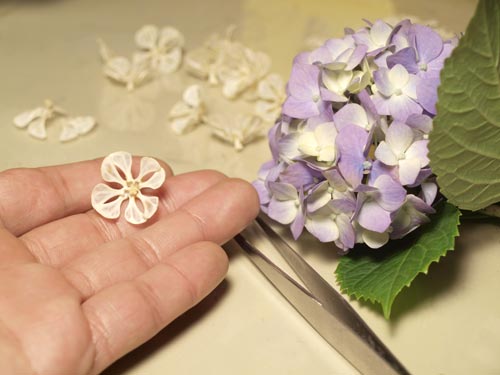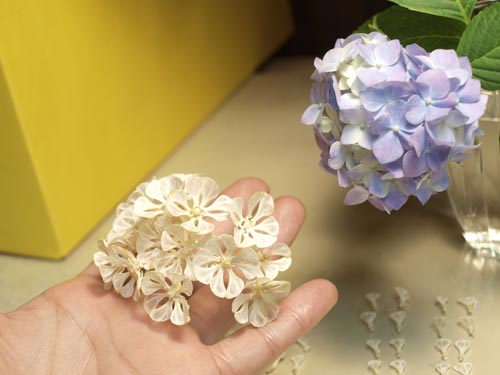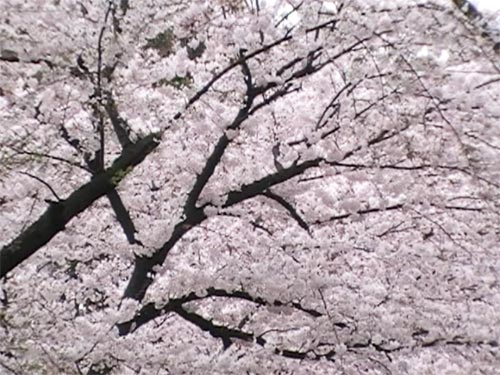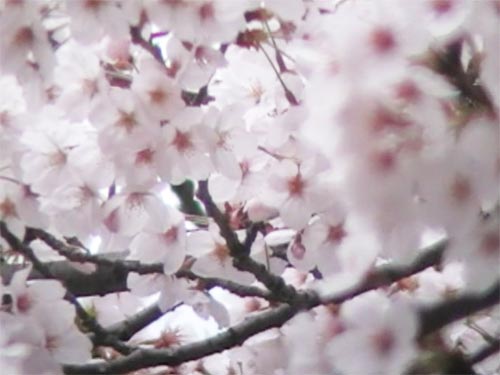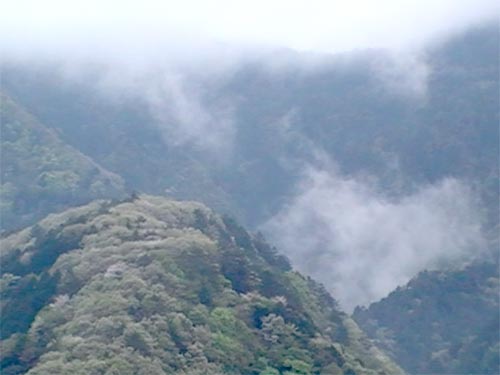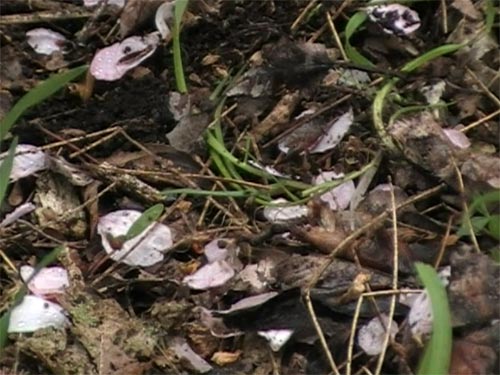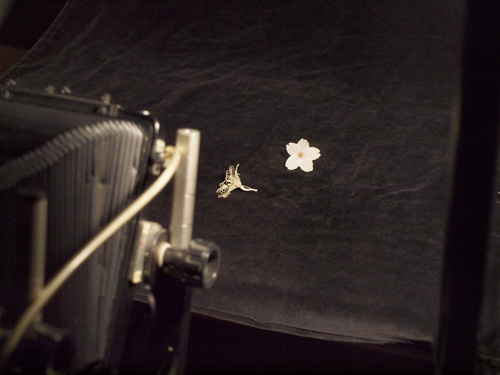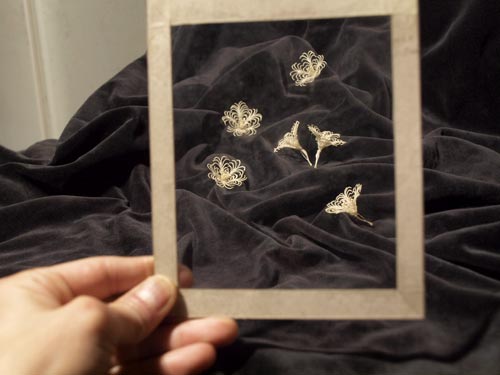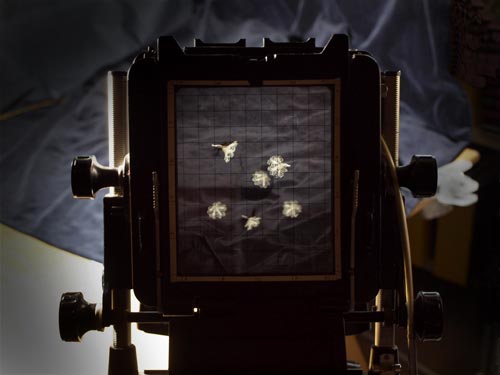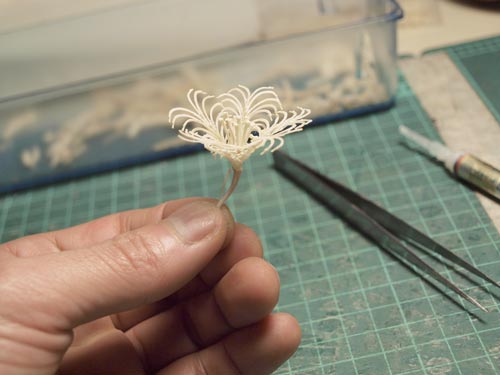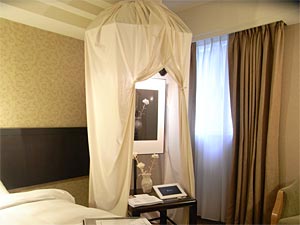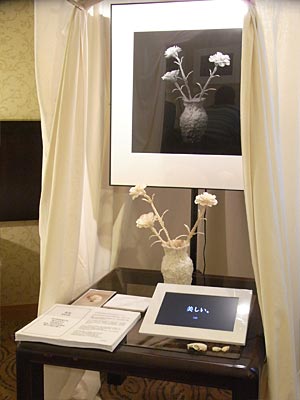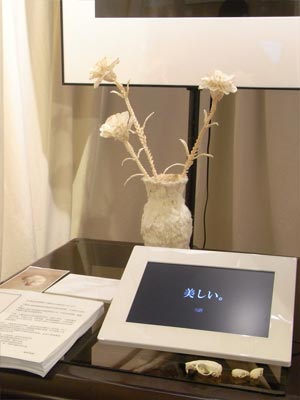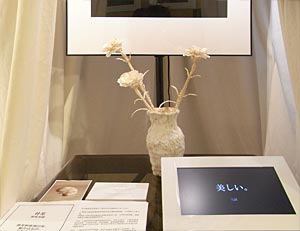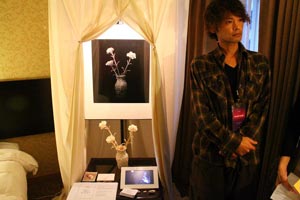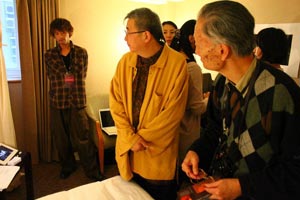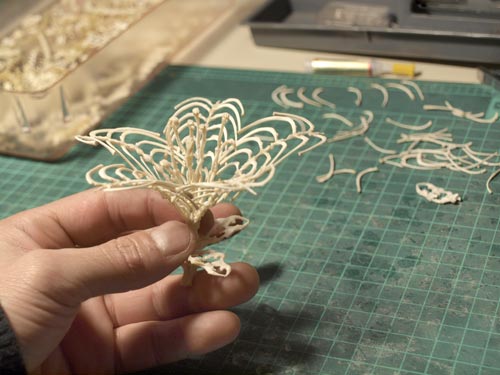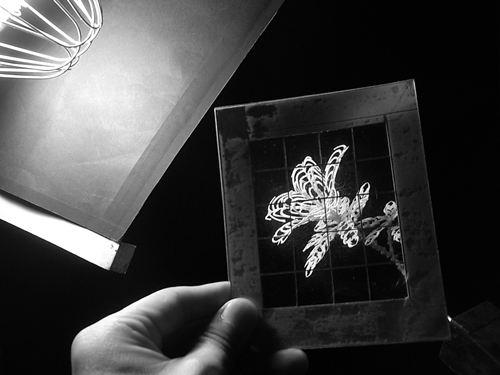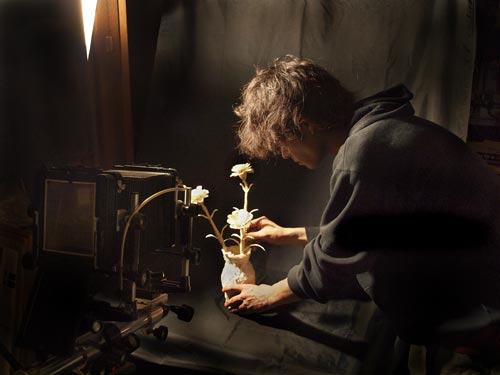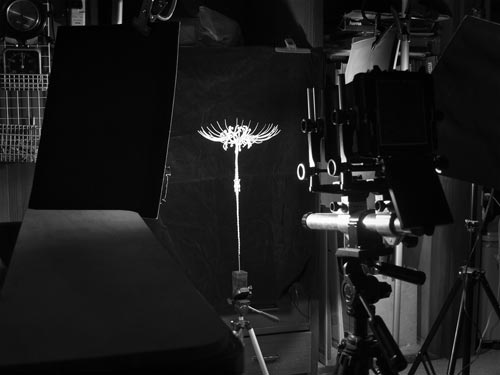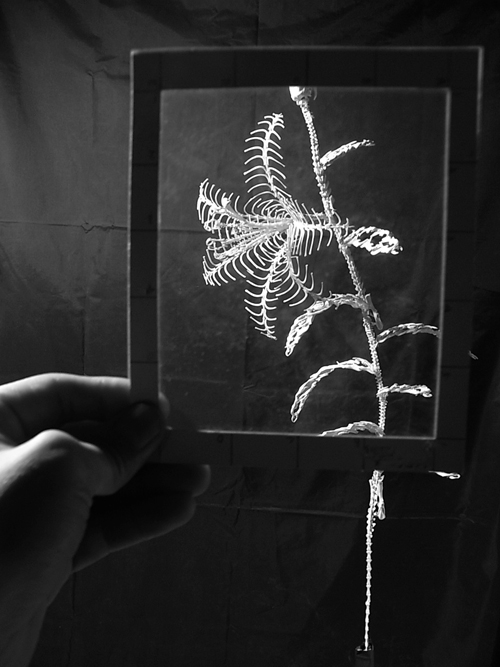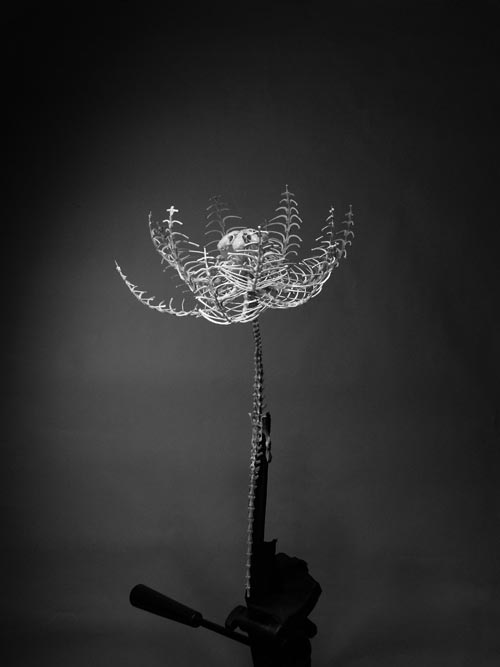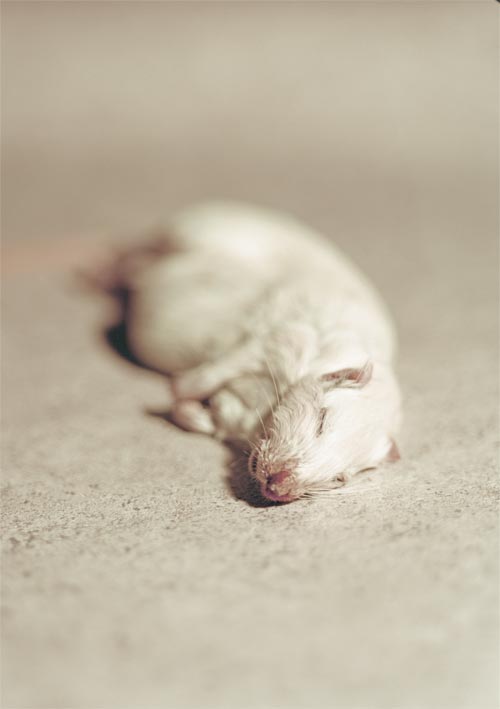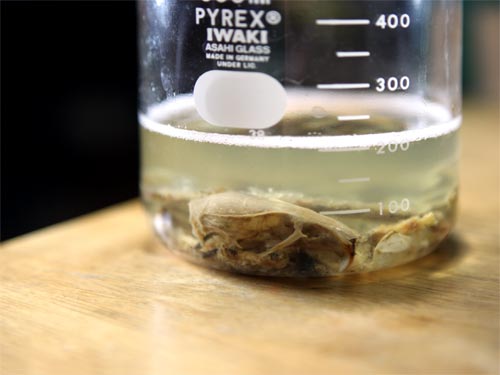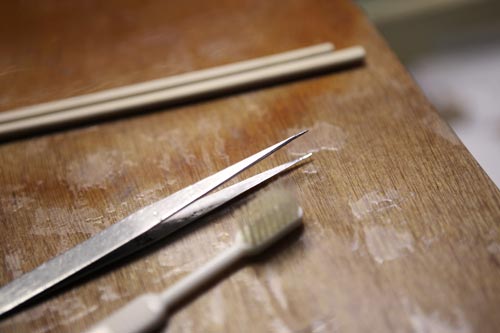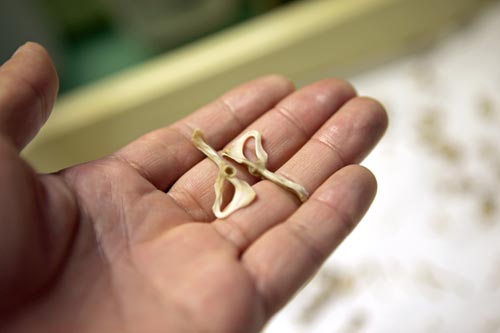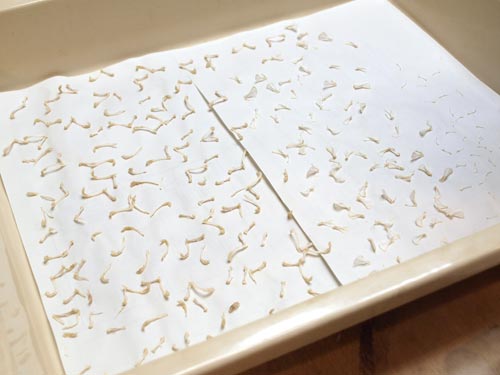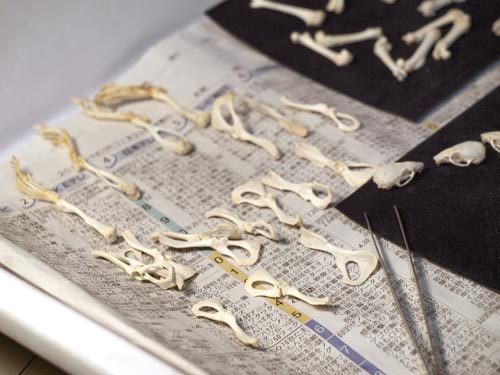Movie
Making of Madonna Lily
by
Hiroyasu Matsui
September 9, 2018
Book
Japanese translation version : Anatomy Rocks
Rodolphe Lachat
December 10, 2018
Graphic Company
Text
Letter of Recommendation | Anna Simpson
November 14, 2018
--Q. How long and in what capacity have you known the applicant?--
I have known Hideki Tokushige since March 2017, when we began to correspond on diverse topics, beginning with life and art after death. Our correspondence has been lengthy, and has developed over time into an artistic collaboration with the potential to last a lifetime - and with direct post-humous implications. We have met in person once, in Tokyo in February 2018.
--Q. Assess the applicant’s work and qualifications; describe the applicant's contributions to the field/discipline and artistic/professional communities in which they work ; and explaining how long and in what capacity you have known the applicant.--
Hideki Tokushige’s work first struck me for its beauty and technical brilliance. I was looking for a new life for my own bones, and could imagine nothing more wonderful than for them to become one of his flowers.
Early in our exchange, Hideki wrote: ‘For humans who don’t have sharp tusks or feathers, the greatest ability is the imagination’.
To begin with, I had no idea that Hideki worked with rats’ carcasses. When I realised, I saw the power of the imagination - to transform a rodent’s bones into an ethereal flower.
Hideki’s work deconstructs life in a very literal way, rebuilding it as art. As rapid technological and environmental change puts immense pressure on fundamental human systems, the possibility of transformation is very compelling. The world has many rats to replace with flowers!
There is a strong message of hope here - but also much that people will find challenging and distasteful. One way of defining art is by its capacity to expand the definition of art… Hideki’s work certainly does this. While bone has been a highly prized artistic material for millennia, and portraiture a mainstream genre, few artists have worked with human bones. The question begs, why not?
Humans have a great capacity for separating out what is acceptable from what is not. Hideki is ready to challenge these boundaries, and yet does so with exquisite elegance and a huge appreciation of the beauty of the natural world - and even of societal structures, including religious traditions which he references. What he achieves is not a facile mockery of what is acceptable, but a subtle expansion.
The impact of Hideki’s art is deeply personal, and this is important. More and more, people are yearning to reach a deeper understanding of themselves and their motivations - beyond material consumption, towards lasting fulfilment. (This is the topic of my first book.) The questions his art raises in relation to our bones and bodies are incredibly relevant today (gender, stem cell research, augmented humans, robotics, posthumous personas … what it means to be human, to be alive), but also stretch beyond today: what will we each leave behind us?
Text
Statement | 2018
Since 2008 I have been working on the art named "HONEBANA (Bone Flowers)". I put the bones of dead animals together into shapes of flowers and take pictures of them. After the photo shoot, I respectfully mourn them by burying them into the soil. Only pictures leave.
I use the bones of frozen rodents that are sold in pet shops as baits for reptiles or prey birds. The rodents are bred and killed for pet. To me, they seemed to symbolize how we humans treat nature in modern society. I pay homage to the rodents' lives, transforming their bodies from the ancillary to art.
I do not carve or bend my bones.I use its natural form and make them to flower objects using only glue. Sometimes it takes a year to finish just one. An enormous amount of bones is needed; 100 to 200 rodents at most. When the flower is completed, I take pictures with a 4 x 5 inch large format camera. After that, I dismantle the bones. I put them in a wooden box, and go to a river bank with a nice view, and carefully bury it into the soil. Some people tell me not to dismantle my work and to keep it, but I feel that beauty lies in transiency. Flowers are beautiful because they shed their petals. Therefore, I will never keep them.
I am often asked by this question, "Why did you connect bones and flowers?". There were two reasons. First is universality. "Bone" was originally the basic tool for mankind. Moreover, bones supports our body from the inside. "Flower" also symbolizes universal. For all cultures or religions, flowers are symbols of beauty or life. It is said that Neanderthal also have laid flowers to the dead. Previously, I was deeply moved by a certain stoneware at the museum. Beyond tens of thousands of years, I felt the will to make it beautifully. I wanted to make universal things that impressed to them too. Second is the integration of opposite things. Life and death, animals and plants, beauty and ugliness, colors and monochrome, and, creation and destruction. I intended to connect such pairs of opposite elements. I believe that the role as an artist is to reconsider the split values and to fundamentally reconnect them.
Moreover, in 2015 I made a series named "NO-BANA (Brain Flowers)" to think again about "to leave the works". These flowers are made of the Cerebrums of a lamb. It is a work that they are blooming in the freezer. They keeps their shapes as long as electricity is in place, but it will collapse if a power failure occurs. The theme was the maintenance and collapse of the system.
At first, my main aim was to “take pictures that no one had ever taken before” but now I am more devoted to “thinking about the act of mourning from an artistic point of view, and expressing the beauty of irreplaceable life through bones". Our society now advances AI technology, genetic manipulation medicine and so on, and the definition of "life", which has been considered commonplace, has begun to shake greatly. I would like to continue to pursue my art to show the other ways of life in modern society, different from any religious or medical point of view.
Media
Nikkei Shimbun newspaper
July 25, 2018
"One moment's life to be photographed in Bone Flowers"
Bones are something that connect all creatures; fishes, reptiles, amphibians, even humans who are mammals. Whenever I am in my darkroom and studio, with animal bones in my hands, I feel as if I am brought back to the roots of my being.
I put the bones of dead animals together into shapes of flowers such as lotuses and lilies and take black-and-white pictures of them. After the photo shoot, I respectfully mourn them by burying them into the soil. I call this entire process “Honebana” and have continued this artwork for 10 years. At first, my main aim was to “take pictures that no one had ever taken before” but now I am more devoted to “thinking about the act of mourning from an artistic point of view, and expressing the beauty of irreplaceable life through bones”.
--“You Know Nothing”--
What was the first thing that inspired me to create “Honebana”? After I graduated from Nippon Photography Institute in 1997, I went back to my hometown in Kagoshima. I became an apprentice to a beekeeper and looked after bees. I have always loved animals, so naturally, I thought I would pursue my career as a beekeeper until one day.
I became fascinated with bones. In 2004, I found a racoon dog lying on the road. It must have been in an accident. I took it home to treat it, but it was too late. The racoon dog was no longer breathing.
What should I do with it? Eventually, I came up with the idea of taking its the bones. I had read a book called “The School of Bones” the junior high school teacher had written and had always wanted to try it myself.
However, when it came to the actual dissecting, my hands wouldn’t move out of fright. “It may just have passed out and could still be alive”. The thought crossed my mind and I couldn’t bring myself to use the scalpel on it. I was shocked to find out that I couldn’t tell the difference between life and death.
After 3 hours of hesitation, I finally gathered my courage and began to dissect. My hands trembled and couldn’t proceed as I planned. By the time I took out all its bones, I was utterly exhausted. The bones of the racoon dog seemed to say to me “You know nothing about life or death”.
The idea of making flowers with bones came to me, after I had decided to leave for Tokyo to start my new career as a photographer.
One evening in 2008, I was watching outside from a second-floor window of a cafe on a crossroad in Ginza. As it started to rain, I saw colorful umbrellas opening. They reminded me of lotus flowers blooming upon the surface of the water. That was the moment I was inspired with the idea of “creating flowers with bones and photographing them”.
Lotus, Sunflower, Lycoris. If the piece of bone is too big, it becomes difficult to make a flower with it. So, I decided to use the bones of frozen mice that are sold in pet shops to feed reptiles and birds of prey. I dissected them and took out their bones. The rodents are bred and killed for pet food. To me, they seemed to symbolize how we humans treat nature in modern society.
--Using its Natural Form--
I do not carve or bend my bones. I use its natural form and glue them together to create flower. For example, I use rib bones for each of the camellia’s petals. The tail bones for stems, the leg bones for the receptacles in the center. The shoulder blades are recreated as lotus petals and the furs are tanned and made into leaves.
I make a living by working as a forklift driver at airports and markets and spend the rest of my time creating. My artwork requires meticulous care, so sometimes it takes a year to finish just one. An enormous amount of bones is needed; 100 to 200 rodents at most.
When the flower is completed, I take pictures with a 4 x 5 inch large format camera. However, if I photograph them as they are, they look like lifeless specimen photos. I must capture them beautifully out of respect for the transient lives of tiny mice. So, I use close-up lens, out-of-focus techniques, and try to capture a live moment swaying in the wind.
When the shoot is over, I dismantle the bones. I put them in a wooden box, and go to a river bank with a nice view, and carefully bury it into the soil. Some people tell me not to dismantle my work and to keep it, but I feel that beauty lies in transiency. Flowers are beautiful because they shed their petals. Therefore, I will never keep my artwork.
--As a Reminder to Ponder on the Way of Life--
At first, people didn’t understand my artwork, but gradually, I see more of them becoming interested. Recently, I have done some exhibitions overseas; this spring, I held a solo exhibition at a gallery in New York. No matter how much my activity extends, that racoon dog will always keep telling me “You know nothing”.
The bones and flowers hold strong images of life and death. I would like to continue to nurture my “Honebana” as a reminder to ponder on the way of life in modern society, different from any religious or medical point of view.
(Modern Artist, Hideki Tokushige)
Collaboration
Atsushi Ezawa, Buyo (Traditional Japanese performance)
Art Market San Francisco, SF, US
April 28 and 29, 2018
Atsushi Ezawa
Program of "NAGAUTA"
MATSU NO MIDORI ( Green Pine) / 1854 Edo period -- The celebration song for the departure.
Art Fair
Art Market San Francisco
April 26-29, 2018
San Francisco,US
Media
ACS Magazine May/June 2018 Issue
May 1, 2018
Renee LaVerne Rose
From page 56 to page 93
<Interview Questions : Anna Simpson>
--Q. Tell us how your career and life’s journey has influenced and/or compelled you to write to Hideki to make this unique request.--
I have come to think that it’s crucial for the health of society that we are able to question how we live, and why we live in these ways. So much of what we do in our current, overly complicated societies is the result of poor thinking, which leads to a mismatch of motivation and outcome. We confuse economic growth for wellbeing. We confuse consumerism for fulfilment. We confuse technological development (often calling it ‘progress’) for improved quality of life. I have come to think this way by working as a journalist - always questioning - and focusing on sustainability. I am continually asking, ‘What will come of this…?’ and ‘Will it be better or worse…?’
One thing I love about art is that it can show us new ways of looking at the world, help us to see beyond our thinking habits, shock us into recognising their limitations. I also love that it can help us to reconnect with our sense of awe. Awe is a very special sensation: seeing the unbelievable in the banal. We need awe to remind us that we’re lucky to be alive, to be part of a living world - and how precious that world and every life in it is.
The moment in which I had the idea to donate my bones to art was very memorable. I felt that tingle of excitement that you get when you think something that has never occurred to you before. I was at the Asian Civilisations Museum in Singapore, looking at an exhibition of ceramics from the Tang Shipwreck. These ceramics (over 60,000 pieces - each one hand-painted) were produced in China during the Tang Dynasty (618-907 AD), and lost in the Java Sea. They were found in 1998. Alongside the ceramics, some carved ivory was exhibited - also over a thousand years old, and beautifully preserved. I thought, how wonderful for one's bones to live on as art... ?
Of course, it wouldn’t do me or anyone else any good for an artist to carve my bones. And I understand that to some people - my close family in particular - the idea is more painful than interesting. I do not mean to cause pain through it, and am sorry for this. For me, it was simply an expression of my curiosity about the very edges of our lives and our minds… I am drawn to ideas that challenge us, that show us our limitations. It also expresses my interest in long-term thinking. Many people start thinking longer term when they have children, or when they first write a will. I wrote my first will at the age of six - during a thunder storm - and have always had an organ donor card. I am not at all a morbid person, though. I simply recognise death as one of the few things we can be certain about. Our bodies will return to the elements when we die. I like the idea of being buried, so that plants can spring up. Hideki’s flowers are a short-lived reflection of this beautiful, natural transformation. If we can donate our blood and organs to medicine, why not give our bones to art? ?
--Q. Why did you select Hideki?--
Almost immediately after seeing the exhibition, I looked up artists working with bones and found Hideki Tokushige. I was astonished by the delicacy of his ‘Honebana’, or bone-flowers. I was even more astonished when I realised that he uses the skeletons of rodents. What a transformation for a rat!?
I didn’t look any further than Hideki. There wasn’t really a thought-out selection process. I simply sent my email as a thought experiment, an arrow into the void. I didn’t really expect a reply. I find it wonderful that this random thought not only found a reply, but a thought exchange that continues to be incredibly enriching for me.
When I first wrote to Hideki, I also imagined he must receive thousands of emails like mine. I was astonished that he hadn't received any! I still think the idea could become popular, particularly among people with money who are attracted by the notion of leaving an impression.?
However, I would most like our ongoing collaboration to inspire transformation beyond art: for it to prompt people to think to the end of their lives and to what they will leave behind them - in ways motivated more by societal impact than by personal status.
Hideki’s work deconstructs life in a very literal way, rebuilding it as art. Today, as rapid technological and environmental change puts immense pressure on fundamental human systems, we’re finding we have to undo and rebuild almost every aspect of our lives - from our food to our work. The world has many 'rats' to replace with ‘flowers’!
--Q. Please provide any additional information you feel you would like to express to emphasis your story.--
From our Dialogue, the line that Hideki wrote that stays with me most is this:
‘For humans who don’t have sharp tusks or feathers, the greatest ability is the imagination’.
Hideki’s art is the epitome of this for me: to see a rodent’s carcass and imagine its journey to an ethereal flower - not only imagine but create! I see this as the inner work we all need to be doing: reimagining ourselves and our lives, taking what we no longer need, and finding ways to transform it into something beautiful.
I would also add that this is an ongoing exchange, and one that we are opening up to the public. In Hideki’s first solo exhibition in New York, we prompted visitors to answer the question, “What traces would you like to leave when you die?” People shared interesting reflections, ranging from ‘None’ to ‘Art’ to ‘The sense of awe in one’s life’…
<Interview Questions : Hideki tokushige>
--Q. Tell us when you discovered your love for photography--
Right from the start, I was much more interested in "photography as a medium" than in photography or camera itself. For me, photography is "the medium for nostalgia". When I was a student, I would often go to flea markets and look for old glass plate negatives among a pile of junk and buy a few. I would take them home and develop them in my own dark room. The lives, the expression, the time that once were of people unknown. The proud faces of those who lived in a time when having one’s picture taken meant a lot more. All these things fascinated me.
--Q. Tell us about the influencing factors that has inspired you as a fine art photographer.--
From 1993 to 1995 when I was a student at a photography institute, the photo collection publishing industry was very lively. Whether you were well-known or nameless or a newcomer, almost anybody had a chance to have their photographs published. I think photo collections and a single photograph should be appreciated differently. Their images continue to influence me.
--Q.Tell us about your artistic process for creating your work. Is the process for each series the same or different? Explain why.
What is most important is idea. It means everything. I always have a memo pad with me. I wouldn't leave it, not even for going to a nearby convenience store for a 5-minute errand. When I am walking at night or on a bicycle and cannot take notes, I would bring a voice recorder with me. When I sleep, I do not turn off the lights, so I can take notes immediately when I come up with ideas in my dreams. This is why I sleep with the hood of my sweatshirt over my eyes. If I don’t catch the ideas whenever they come, they will disappear. No matter how absurd or impossible my ideas are, I always record them.
At my solo exhibition "Brain Flower" in 2015, I did a performance at the gallery where I sleep the whole time. My brain remains active while my body sleeps. To have my audience see me sleep was to me a live production, just like those of an artist painting live at a gallery.
My ideas become seeds and give life and end life to new ideas. My project grows, like plants branching off.
--Q. Tell us how often you like to be working on a project. What does your fine art photographer studio look like? (i.e. how much time do you spend in the studio, what does a normal workday consist of, is it a home or off-site studio, is it terribly messy, etc.)--
I live in a two-story house. I use the first floor as my work space, and the second floor as my living space. I do most of my creative work on the first floor; taking out the bones, assembling them, taking pictures and developing them. Ideally, I’d like to use the first and second floor evenly, but whenever I have an exhibition coming up, I find myself cooped up on the first floor. Especially when my work isn’t going too well, I try to go upstairs as much as I can to look at things from a different point of view.
--Q. Tells us about your work from your most recent exhibitions.--
My latest is the solo exhibition I am presently holding in New York. (till April 21) I have brought my latest work "Otome-Camellia" from Japan for this exhibition.
I am also presenting the exchange of e-mails between Anna and myself called, "Dialogue".
We are prompting visitors to answer our question, "What a mysterious question this is! Do you want to become a bone flower?". Our visitors will write their answers on a piece of paper and stick them on the wall. Here are some of their answers:
Beautiful architecture -A museum with my bones somewhere.
The sense of awe in one's life.
The short but brief happiness that make it worth it to struggle.
Imagination, science and all things that disappear but reappear in other forms.
The cause and roots of a revolution that will result in an uprising against all problems of today...
No traces.
Less human destruction.
Art.
None.
--Q. Tell us what you're hoping to convey to your audience when you exhibit your work and/or when your work is viewed.--
Soon after I came to Tokyo for the second time, I visited the National Museum of Nature and Science. Their exhibition started off by explaining the birth of the universe, Earth, the sea, and lives that set foot on land. Among the exhibits, there were stone implements from ancient times. One of them caught my eye; a piece of stone cut thin and sharp in a careful symmetry. At that moment, I could almost see the back of the creator cutting that stone. I understood what the creator was thinking during the making. He was trying to make something more than a simple stone tool. With the time and effort the creator gave to this one stone implement, he could have made a lot more and simpler tools for hunting. Cleary, the creator was aiming for more than its original use, something beautiful. 20~30 thousand years later, I saw the beauty in it. Then why can’t I make something beautiful to the eyes of this creator? I must. That’s what I thought. Something beautiful and universal, and something nonverbal.
This was how I got the idea for creating bone flowers. Ultimately, I would like to think I am making my artwork solely for the eyes of that creator who lived thousands of years ago.
--Q. Tell us about any challenges within your fine art photographer career, how you worked through these difficulties and to be more creative.--
I had already created 4 bone flowers and hadn't had the chance to present my work. I had no acquaintances in the art world, nor did I have a place to exhibit my work. I had no idea what this would lead to. At the time, I worked nights as a forklift driver to make money and time for my bone flowers. I would come home from work, then create bone flowers, and then go off to work again. Every day was a repetition of this. Gradually, I came under the illusion of making a time bomb. When should I make this bomb explode as a photographer? The thought became my driving force and I was able to concentrate on my artwork. Now, I have a place to present my artwork and many visitors come to see them. Though my conditions have changed, I still cherish my time alone. My desire to create is fostered when I am alone.
--Q. Do you have mentors and advisors you seek for advice from regarding your fine art photographer career? --
I often see friends I met at the photography institute who are presently professional photographers. We seek for each other’s advice. This enables us to review our work objectively. I think this works very well for our careers.
--Q. Name three fine art photographers admire that contributed to you developing your style and explain why.--
William Henry Fox Talbot : Because he invented the idea"photography as a medium"
Thomas Demand : Because he invented the process of "structuring and destructing" through creating something, taking pictures of them and breaking them.
Karl Blossfeldt : Because he saw nature’s form as a structure.
--Q. Has gallery representation been an intricate part of art career or has working independently been more beneficial to your career? Or has a combination of both styles worked best for you?--
This is a difficult question. Many of my artist friends find it hard to build the right kind of relationship with the gallery. I too, have still not found an effective way.
--Q. Tell us one of the funniest and/or weirdest moments in your career.--
After I graduated from the photography institute in Tokyo, I spent 10 years (from age 22 to 32) back in my hometown, Kagoshima City. When I was 28, I began beekeeping as a hobby. I placed nest boxes in the orange fields and took care of the bees. At the time, I thought of taking up beekeeping as a profession, so I went and asked a professional beekeeper to teach me more about the business. However, the answer I got from him was this, "There’s something more for you than beekeeping. You should be a temple and shrine carpenter. Why don’t you become one of their live-in apprentices and study carpentry from scratch?” Temple and shrine carpenters are highly respected in Japan. The reason he suggested this to me was because he had seen my handy work. I had made all the frames in the bee nest boxes myself, and I had also removed roof tiles from old houses that were damaged by termites and reconstructed them. I reconsidered my future once again, and decided to go back to Tokyo. I remembered my words to my parents when I was 19, "I want to go to Tokyo to study photography". Whenever I tell people about how I once wanted to become a beekeeper, they find it strange. However, I feel they are all connected.
--Q. What advice do you have for emerging fine art photographer who are entering the art world that is rapidly changing?--
The Japanese product designer Naoto Fukusawa once said, "Let’s say you have an idea for making a pyramid. Most people would start by building from the bottom, placing many stones to make the foundation. If you try to make a high pyramid, you would get tired of placing the stones at the bottom and give up. Rather than that, let's start with 4 stones and put one stone on top. See how the pyramid is already completed? It’s small but unmistakably a pyramid. If you want a bigger one, you could expand the bottom slightly, and complete it by piling up 3 blocks of stone. By continuing this process, you can get a higher pyramid. This way, the pyramid will remain no matter how discouraged you become during the process".
I feel that his way of progressing his work is reasonable, and it also teaches us many things. The world of photography changes with time. Our society changes. People change. Especially when you are young, I think it’s important to complete your work no matter how small it may be and hold many exhibitions as possible.
--Q. What are you currently working on and most excited about moving forward?--
Exchanging e-mails with Anna has brought a profound change to my activity. Her present occupation explores the issues of the future. I find this very suggestive. To contemplate the future means to contemplate death. Presently, we are planning new project together. We think this will become something meaningful to our society.
Text
Questions from BNPS | Anna Simpson
March 27, 2018
--Q. What makes you interested in donating your bones after death?--
Two things fascinate me in society: our (often limited) capacity for long-term thinking and visionary transformation. Much of what we do is motivated by short-term gain, whereas art can provoke us to think beyond our lifetimes, and step out of our current mindsets and assumptions.
I first had the idea to find a bone sculpting artist when I saw exquisite Tang Dynasty carved ivory exhibited alongside ceramics from the Tang Shipwreck at the Asian Civilisations Museum in Singapore, last year. Although I am in favour of ivory bans today, I found it very beautiful - and it had been so perfectly preserved! I thought, how wonderful for one's bones to live on as art...
--Q. Where did you hear about Hideki?--
Almost immediately after seeing the exhibition, I looked up artists working with bones and found Hideki. I was astonished by the delicacy of his flowers. What a transformation for a rat!
--Q. Do you think this will become a more popular idea over the coming years?--
When I first wrote to Hideki, I thought he must receive thousands of emails like mine. I was astonished that he hadn't received any! I do imagine the idea could become popular, particularly among people with money who are attracted by the notion of leaving an impression. However, I would most like our ongoing collaboration to inspire transformation beyond art: for it to prompt people to think to the end of their lives and to what they will leave behind them - in ways motivated more by societal impact than by personal status. The world has many 'rats' to replace with 'flowers'!
--Q. Are there any designs that take your fancy in particular?--
I love the 'Honebana': the flowers. If I were to be able to ask Hideki to make my bones into a flower of my choice, it would be a poppy - not for the association with fallen soldiers, but for its silky combination of resilience and fragility. Whenever I see one I'm astonished at how it keeps its balance in strong winds and adverse situations. I realise now though that human bones aren't suited to flowers. Our skeletons lack the delicacy of rodents...
--Q. Have you spoken to those close to you about this, and what do they think about it?--
I have... and perhaps I should not be surprised that they found it rather morbid and disturbing, at least initially. To me, it is simply like having an Organ Donor card - which I did from a young age. Our bodies will of course return to the elements when we die. I always liked the idea of being buried, so that plants could spring from the flesh. If we can donate our blood and organs to medicine, why not give our bones to art?
Media
Shukan NY Seikatsu Shimbun newspaper
March 27, 2018
Media
TRIBECA ART
web site
March 21, 2018
SCULPTED FROM HUMAN REMAINS
Flowers Made from Animal Bones
<Interview Questions : Anna Simpson>
--Q. Why did I donate my bones?' --
"Two things fascinate me in society: our somewhat limited capacity for long-term thinking and for transformation. Much of what we do is motivated by very short-term gain - whereas art can provoke us to think beyond our lifetimes.
I had the idea to write to a bone sculpting artist when I saw carved ivory dating back 3000 years, exhibited at the Asian Civilisations Museum in Singapore. Although I am in favour of ivory bans today, I found it very beautiful - and it had been so perfectly preserved! I thought, how wonderful to leave one's bones as art! So I looked up artists working with bones and found Hideki. I was astonished by the delicacy of his flowers. What a transformation for a rat!
When I first wrote to Hideki, I thought he must receive thousands of emails like mine. I was astonished that I was the first! I am happy if our collaboration prompts other people to think to the end of their lives and to what they will leave behind them. We all have the opportunity to make it something beautiful."
<Interview Questions : Hideki Tokushige>
--Q. Will you consider accepting some of her bones to make a sculpture? Do you know if it will be a flower or which flower?--
After receiving Anna's first e-mail, I purchased a whole skeleton model and tried to make flowers many times with human bones. I tried to use bones of all parts. I found a way to make bouquets. But it was not beautiful. It was not fragile. I need to find a better way. Beauty is power.
Why did I want to hear a lot of Anna's episodes? In order to use bones as art, it is most important to know what kind of life she lives in. Even if I make artworks using bone of an unknown person, my life and that life are not linked at all. That is not art for me. That's just a purpose.
--Q. Will you consider donations from other people who want sculptures made from their partial remains?--
About one month ago, Anna told Anna's mother this project. Her mother was surprised. I and Anna talked over and over and we stopped using Anna's full name in the dialogue. Even if Anna's mother was my mother she would have taken the same reaction. We admit this decision.
Solo exhibition
Honebana
March 14 - April 21, 2018
GALLERY KOGURE NEW YORK /USA
434 Greenwich Street, New York, NY 10013
Closed on Sunday and Monday
11am - 6pm
Opening Reception
Wednesday, March 14, 2018, 6-9pm
( TRIBECA ART+CULTURE NIGHT )
" Otome-Camellia " was exhibited.
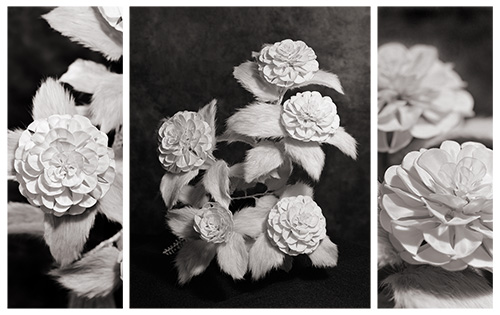
Otome-Camellia, from the series Honebana, 2017
[open] W192×H118.5×D5cm
[close] W96×H1185.5×D10cm
Edition 1/1
Pigment Print on Aluminum, Wooden Frame with Hinged Double Doors
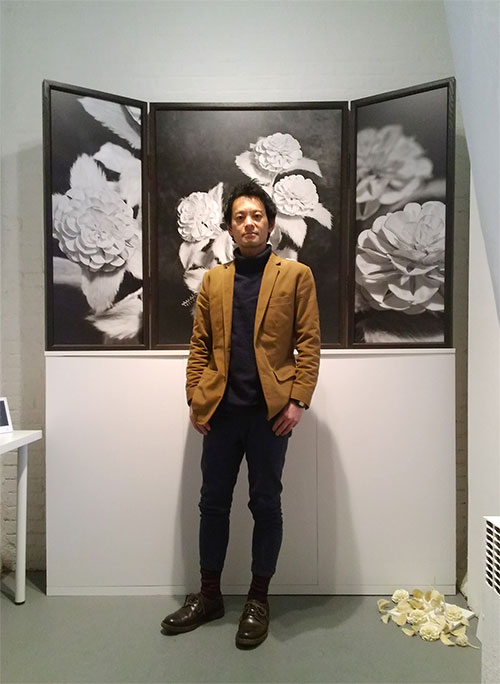
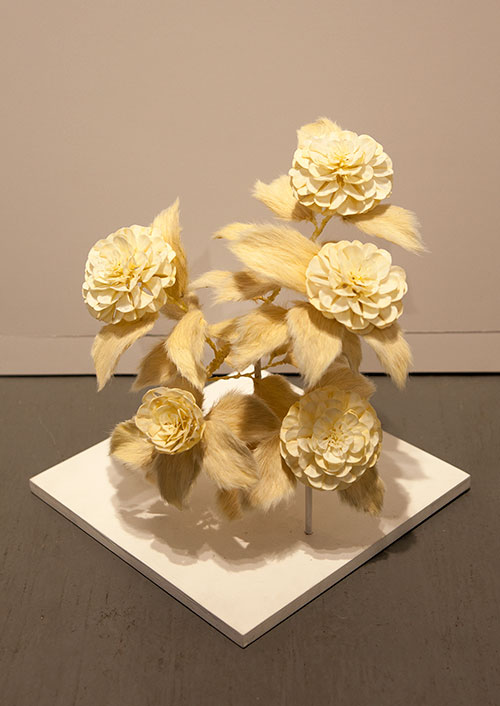
<Photo Frame with Hinged Double Doors>
When this frame opens, the width is 2 meters.
The buyer will become a member of the Honebana Otome-Camellia Project. They can participate in the process hereafter. The buyer can join the process to "return it to the earth" with the artist. The scene will be videoed and edited. The picture of the buyer returning the bones will be added to the side doors of frames. When the doors are closed, the picture comes to the center. This entire process will be considered as artwork.

<Dialogue>
March 2017, the artist received an email from abroad that says “I am looking for an artist to donate my bones to once I die.” They began to exchange of emails. This is an 11-month-record of the two, during the period of March 2017 to January 2018.
Dialogue, 2018
30×30×3cm
Edition of 10 with 5 APs
Ipad, Acrylic board, Paper
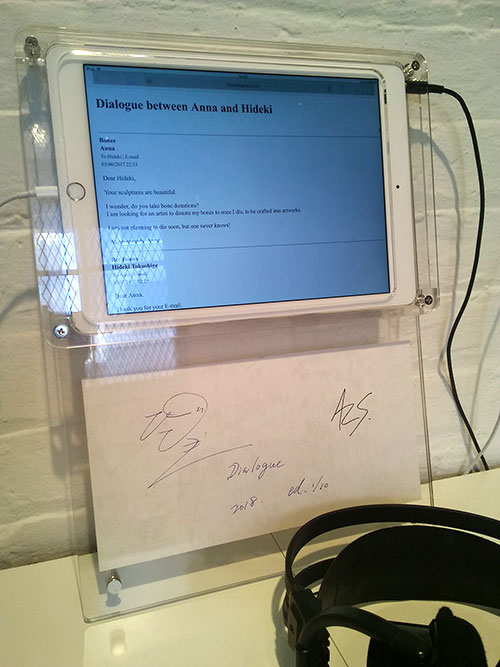
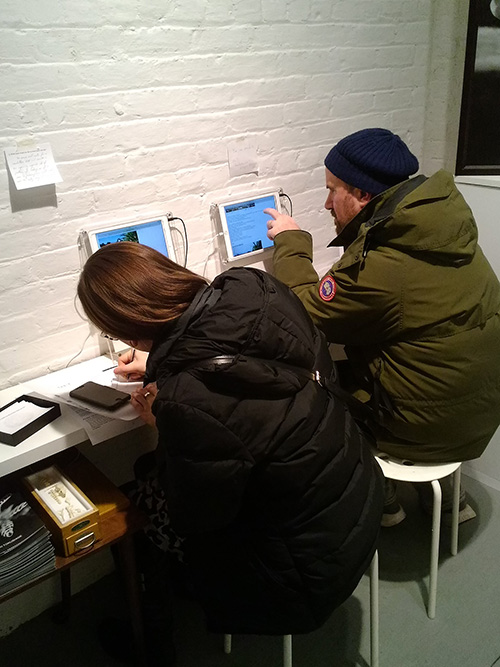
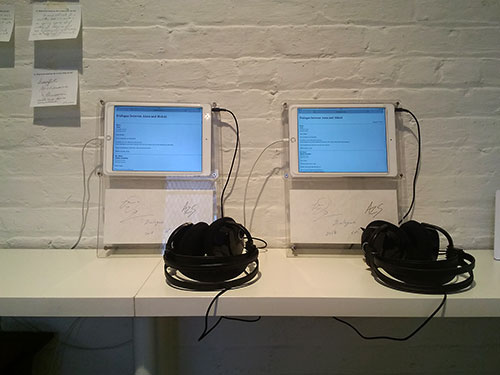
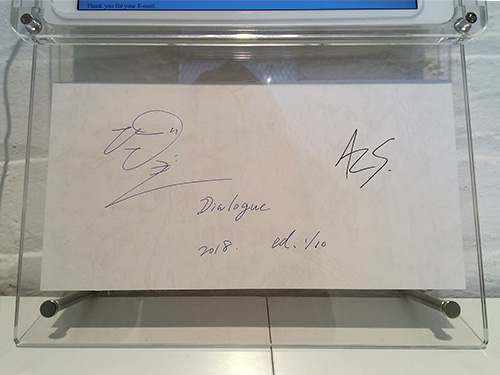
<Question>
" What traces would you like to leave when you die? "
We wrote a certain question on the wall. Visitors wrote their answers and put up them on the wall.
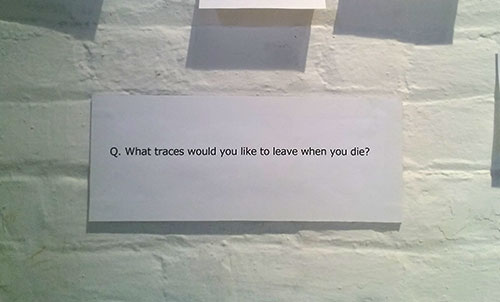

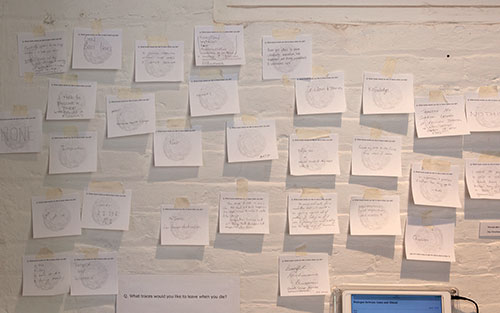
<About the collaborator in "Dialogue" : Anna Simpson>
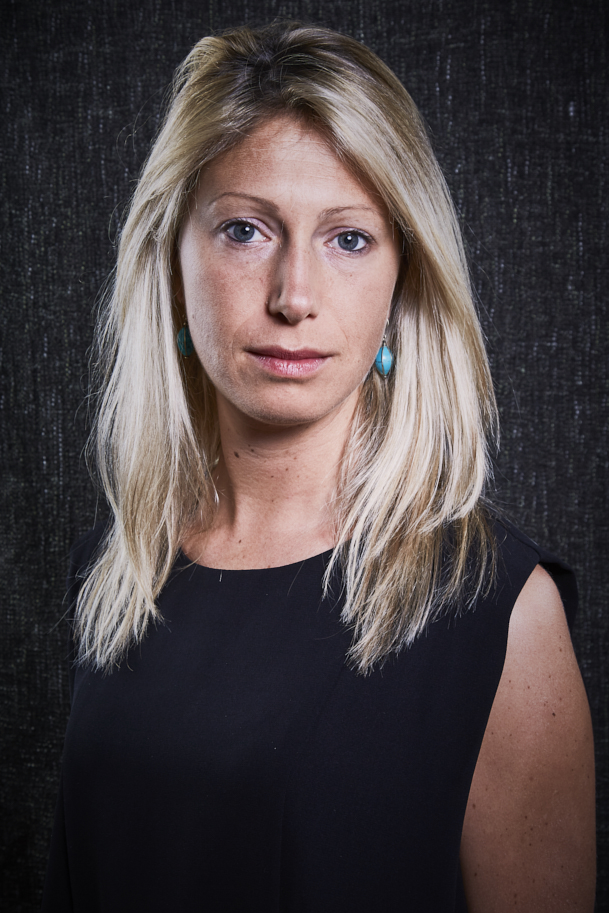
Anna Simpson (b.1983) is interested in how we can be more mindful of our long-term future, as individuals and societies. She is the author of two books exploring the future of business and society, and an innovation coach, helping people explore complex scenarios to become more resilient to change. She also curates the Futures Centre, an online community tracking change for sustainability. In her latest book, The Innovation-Friendly Or anization (2017), she asks how organisations can develop a culture that embraces change. In The Brand Strategist’s Guide to Desire (2014), she challenges brands to shift their emphasis from short-term sales to long-term fulfilment. With a background in journalism, Anna was previously editor of the sustainable solutions magazine, Green Futures. She grew up in the UK and studied English and French at Oxford University, followed by a Masters in Gender Studies at the School of Oriental and African Studies.
Solo exhibition
Honebana (Photo exhibition)
January 12 - February 3, 2018
GALLERY KOGURE NEW YORK/USA
434 Greenwich Street, New York, NY 10013
Closed on Sunday and Monday
11am - 6pm
Book
Zin Second edition
January 2018 second edition
1000 copies
Photography
Portrait
by
Hiroyasu Matsui
January 2018
thesis
Portrait of history -A Hideki Tokushige's viewpoint in Honebana-,
Master's Thesis Hitotsubashi University
Marina Honda
January 1, 2018
Chapter 1: Introduction
1-1:Honebana
1-2:Meaning of being a photograph
Chapter 2: History of death and Present
2-1:Boundary of eeriness
a) Where there is the honebana
b) History of death
c) Sacred / Profane, pure / impure
2-2:Ritual of death
a) Fundamental death
b) Ritual surrounding death
2-3:The present of life and society
a) Bioethics
b) Development and problems of technology surrounding life
Chapter 3: "Honebana" as salvation
3-1:History and photograph - The Sun flower -
a) The time in the Benjaminish history
b) post morterm photography and the mourning
3-2:Politics of gaze
a) Transcendental death makeup and reproducibility
b) Politics of eeriness
The last chapter: Conclusion / From heterotopia
Start of social media.
Group exhibition
spiral take art collection 2017
December 15-25, 2017
Spiral Garden, Tokyo
" Otome-Camellia " was exhibited.
The Process / Make Flowers
The " Otome-Camellia "
September 2017
The bones used to make the petals of the “Otome-Camellia” were mainly the scapulas of rats. A single flower was made of 40 pairs of scapulas. For the whole flower, 200 pairs were used. Both rodents and humans have also two scapulas each on their backs. It connects to the humerus at the shoulder, and connects to the collarbone on the side of the neck too.
For the flower’s center, small scapulas of mice are used. Surrounding the center are made of the scapulas of rats, and The outermost side are those of guinea pigs. The edges of scapulas of guinea pigs are straighter than those of mice and rats, and similar to the shape of ginkgo leaves. They seem to be made of same kind of bones, but they are slightly different.
Group exhibition
YUKI-SIS presents The Fools ≒ Great Artists
August 18-27, 2017
Spiral Garden, Tokyo
Group exhibition
The Fools
2017年3月4日-18日
Gallery YUKI-SIS, Tokyo
Close on Sun. Mon. National Holiday
12:00 pm - 7:00 pm
Nihonbashi Xio Lou #202, 3-2-12, Nihonbashi Honcho, Chuoh-ku, Tokyo
" The Narcissus " was exhibited.
The Process / Make Flowers
The " Narcissus "
January 2017
Book
Anatomy Rocks: Flesh and bones in contemporary art
Rodolphe Lachat
October 18, 2016
Cernunnos
The Process / After That
The " Sunflower "
June - September 2016
Text
about the "NO-BANA (Brain Flowers)"
June 2016
The two series, "Honebana (bone flowers)" and "No-bana (brain flowers)", constitute my representation of the two sides, the front and the flip sides, of the same theme - flower. That is to say, "Honebana" is the series achieved by approaching the theme from the natural side, while "No-bana", from the approach of artificial environment.
So long as we have bodies, we are unable to escape from death. To me "flower" means the "beauty that transcends time" and the "stories of each of us human beings which transcend our physical bodies."
Media
MERRY, -NOnsenSe MARkeT FINAL-, LIVE DVD Art work
Released June 22, 2016
The Process / Break, Return to the Earth
The " Camellia "
April 12, 2016
The Process / Leave Images "Camellia" >>
The Process / Make Flowers "Camellia" >>
Group Exhibition
UFO has arrived at YUKI-SIS
March 12-26, 2016
Gallery YUKI-SIS, Tokyo
The "NO-DAMA (Brain Ball)" was exhibited.
TV Show
ART is AHO!#14
February 26, 2016
Fuji Television, JP
thesis
Image of death in Hideki Tokushige's Honebana,
Honda Marina
February 2, 2016
Chapter 1: Honebana
1-1:A beautiful and eerie works
1-2:Hideki Tokushige and Honebana
Chapter 2: Death and Photography
2-1:Where is the viewer?
2-2:Mixed time
2-3:“that-has-been”
Chapter 3: Death and Bones
3-1:The place of life and eeriness
3-2:Threshold bones and eeriness
3-3:Immorality and complicity
Chapter 4: Photography and Honebana
4-1:Honebana as a work of mourning
4-2:Taking pictures for Honebana
4-3:Lots of killing and trauma
Chapter 5: Conclusion
5-1:A world that can not be captured. Journey continues still
A thesis / Portrait of history -A Hideki Tokushige's viewpoint in Honebana- >>
Online Gallery
The Artling
February- 2016
Art Fair
FINE ART ASIA
October 3-7, 2015
Hong Kong
The Process / Break, Return to the Earth
The " Sunflower "
September 22, 2015
Art Fair
ART FAIR ASIA / FUKUOKA 2015
September4-6, 2015
Fukuoka JP
Solo Exhibition
NO-BANA (Brain Flowers)
May 30-June, 2015
LOWER AKIHABARA. , Tokyo
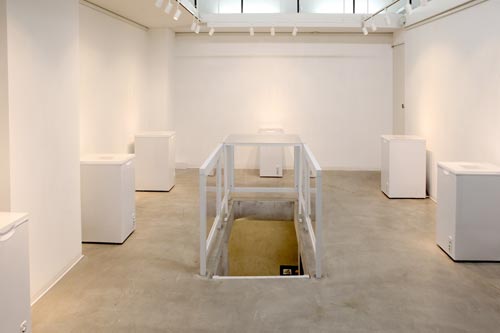
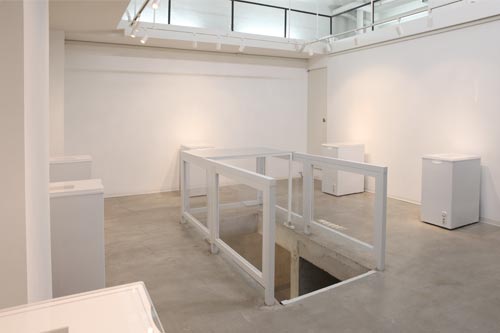
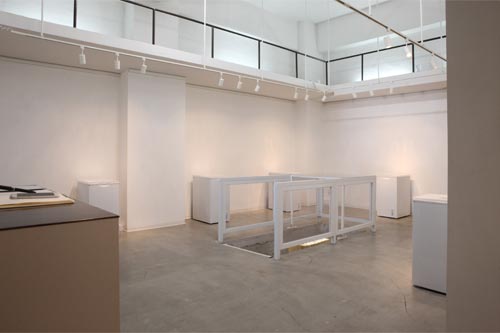
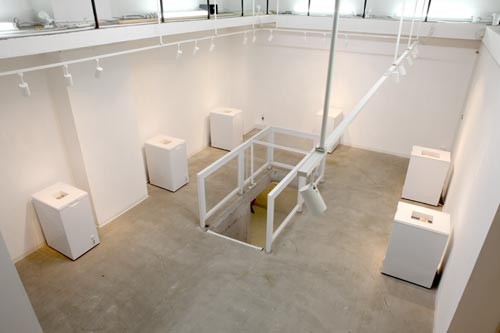
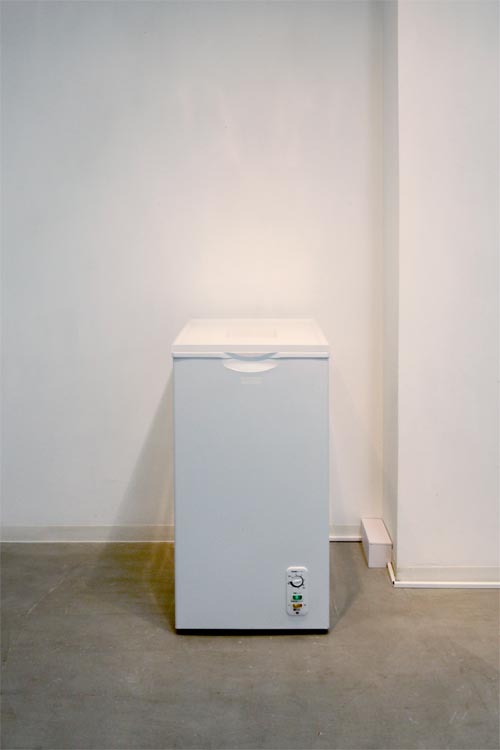
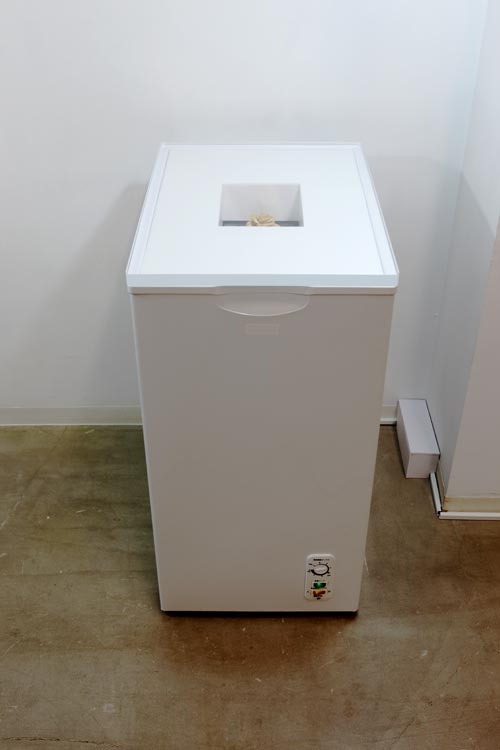


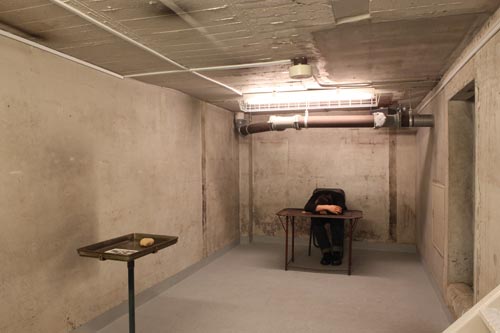
NO-BANA (Brain Flowers) / Rosa
2015
Lamb brain, Glycerin, Gel medium, Freezer, Stainless steel, Acrylic, Baby powder, Wood
#01 ‘Brillante’ 7.5×7.5×6cm
#02 ‘Samourai’ 9×10×6.5cm
#03 ‘Orange Chance’ 9×10×6.5cm
#04 ‘Rhodos’ 7.5×7.5×4.5cm
#05 ‘Lilli Marlene’ 14×18×7cm
#06 ‘Yukacup’ 10×10.5×7cm
Freezer size 40.5×55.5×79cm
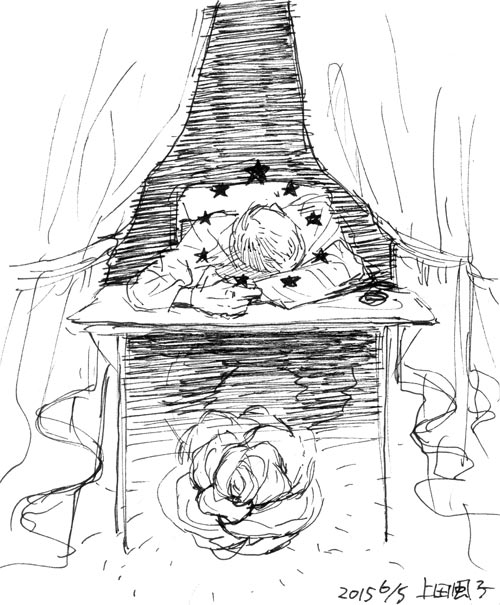
Illustration : Fuco Ueda
about the "NO-BANA (Brain Flowers)" >>
ARTIST DATABASE - Exhibition information>>
Solo Exhibition 2013, HONEBANA (Bone Flowers) - Queen of the night - >>
Group Exhibition
Animals revived in Art
May 11-17, 2015
Istean Shinjuku Art Gallery, Tokyo
The Process / Leave Images
The " Reeves spirea "
May, 2015
Group Exhibition
Art exhibition with bones
April 15-21, 2015
Istean Shinjuku Art Gallery, Tokyo
Group Exhibition
LOST ANIMALS II / The Group Show
January 16-February 14, 2015
Gallery Art Composition, Tokyo
The Process / Leave Images
The " Chinese lantern plant "
January, 2015
MERRY
Shinjuku Tower Records
December 22, 2014 - January 5, 2015
Album Cover Artwork
MERRY - NOnsenSe MARkeT
December 24, 2014
Group Exhibition
The Fools ⇔ Great Artists
November 8-22, 2014
Gallery YUKI-SIS, Tokyo
The " Sunflower " was exhibited.
Photography
by Arjan Schuitman
August 2, 2014
Group Exhibition
ReSTART
October 12-26, 2013
Gallery YUKI-SIS, Tokyo
The " Fragrant olive " was exhibited.
The Process / Break, Return to the Earth
The " Dandelion "
August 28, 2013
The Process / Leave Images "Dandelion" >>
The Process / Make Flowers "Dandelion" >>
News Website
Wired.co.uk
July 31, 2013
by Liat Clark
Group Exhibition
Esperanto
July 13-22, 2013
Bunkamura Box Gallery, Tokyo
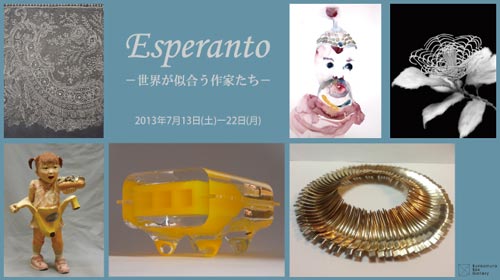
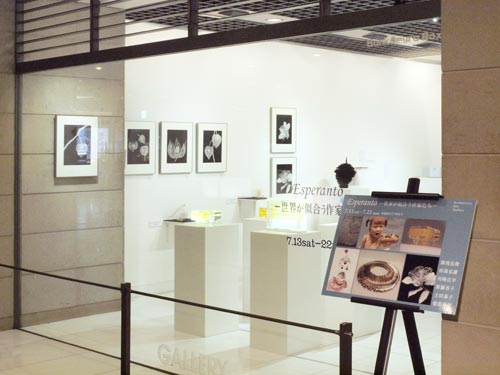
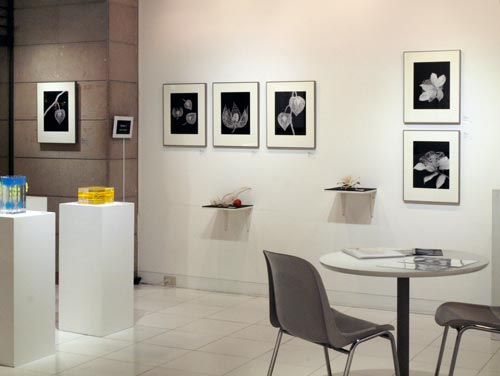
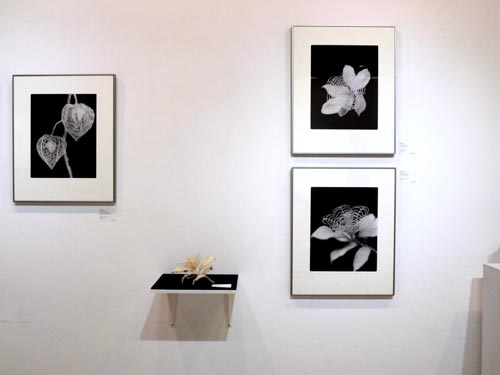

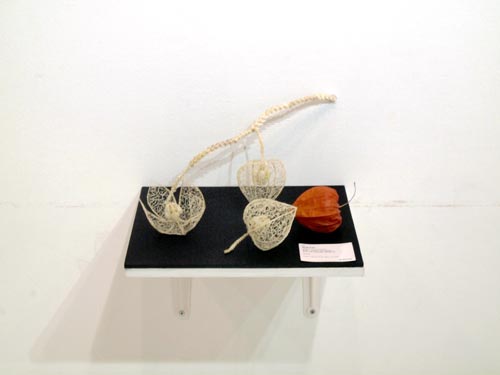
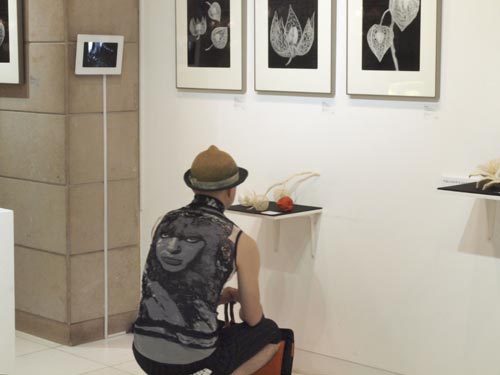
The Process / Make Flowers
The " Chinese lantern plant "
June, 2013
Text
Interview 2
June, 2013
Q, What motivated me to begin the project
One morning 9 years ago, I found a dead raccoon dog that was hit by a car on the street. It happened about this time, I had just finished to read a book about anatomicalscience. This book was very unique and interesting for me. I just wanted to take the bone out like this book. I was very scared, could not touch it with my bare hands, but took out the dead body to my place.
I laid it down at bathroom. The book said, "First of all, put the knife to stomach". But I couldn't. Because I had suspicions abouthis death -I guessed he still alive.
Of course the body was cold, didn't breathe, and had no pulse. However I couldn't wipe my imagination about that he just lost consciousness. If I get 100 percent credit, I can't cut deeply into the body. My imagination was horrible - minute I cut the body come back to life and run around my room.
For me, who born and brought up an urban life in Japan, the dead body was seen at science laboratory, museum, butcher's shop or fish store. At these place, someone judge if they dead or not. When my bird dead in my home, my parents told me she is dead. I didn't need to judge anything if it is dead or not.
So many things happened in my life, but for the first time I realized that I didn't have any experience to judge of the life. Also I was surprised myself I didn't know he is dead or alive.
It was very shocking phenomenon for me. I don't know the death, it means I don't know the life. I leaned I know nothing at all.
Q, The reason I choose the mouse born as my material
Through my art activity, I hope to convey the core idea which can be primordial consciousness as matrix that people can share beyond the confine of race or nationality.
Long time ago, the age of Dinosaurs had flourished, our ancestry of mammalian had survived with form like mouse and have evolved until now. Using mouse born means to approaching to original form of mammalian. The structure of the mouse's body is very close to human body.
Actually, I use frozen Mice and Rats are sold as pet food. They are feed for Snakes or Owls. They are born, growing up, killed, frozen and become to feed as artifactually-produced.
I have a dog in my home town. Pets exist for human. Their existence is between nature and artifact. The frozen mice are sold as feed for the pets are moreover artifact. I think the frozen mouse is symbolic representation of artificial nature among our city life.
Q, Why do I make flowers
The act of laying flowers to the dead is common human behavior beyond different nationality, country even Era. There are some research results of that extinct Neanderthals also used to send the dead off on their journey from this world with flowers.
Flower has strong historical links with the death. Human being have put wishes and feelings into flowers. I make the bone flower because I really want to find the tradition of originally prayer.
Q, Process of works
Anatomy of mouse--- Taking out bones---Making bone's sculpture--- Taking pictures--- Film developing--Printing---and Bury the sculpture (bone flowers) to the ground.
Every process is done by the artist.
For shooting, I use 4x5 inch film camera, take a long time to shoot like having a dialogue with bone flowers.
Text
Interview 1
June, 2013
1) When did you make your bone flowers?
I started to make bone flowers since 2008.
I didn't know how people would feel my act that taking born out and making flowers, so I could not show them during 3 years at all.
As you might know it happened a disaster and nuclease accidents in north of Japan in March 2011. Even in Tokyo where I used to live at that time, we had also have many very strong after-quake so often, we were spending unstable days.
As many Japanese people did so, it was the time I reconsidered the way of my life and existence. The earthquake was a prompt for me that I made my determination to show my "bone flowers" to the public, it was never showed before.
I had started preparation for art exhibition, finally I made it public, it was 6 months after the disaster happened. At this exhibition, I won the grand prize, then I have now.
2) How long do they take to make?
I do all process of works by myself. I take a lot of work and time to dissection due to do one by one. My work is started from taking bones out .For making a flower, I always use around 100 mice bones. Recently I also use their fur skin. Sometime it takes a time over 1 month for only dissection.
3) Are they real bones? If so, where do you find them? What animals are they from?
The bones are from real mouse and rat that are sold at pet shop as feed, are called "frozen mouse". People who have snake or owl as pet, unfreeze and feed it their pet.
In the beginning, I didn't know it, so I was surprised such mice are sold at pet shop. They are born, brought up ,killed ,and frozen for human's pet. I felt this is just the symbolic thing of the nature among the modern society we live.
I am so easy to scare more than ordinary people, I am not good with horror movie as well.So I have feelings of resistance toward touching dead body at first. But as I have treat them several times, I became to feel a familiarity with frozen mice.
4) If they are fake bones, how do you make them?
I make bone flowers to using real bones in combination. I don't use any wire or support medium. I only use real bones, fur skin, and glue. Because for all stuff will be able to return to the earth. Bone flowers are pull apart and put in the ground after shooting.
5) Can you go through a step-by-step way of how to create the bone flowers, from start to finish?
I always explain my process flow of bone flowers simply like that- "Take bones out, Make flowers, Leave images, Break, Return to the earth".
For example, I come in view of flower petal subconsciously as touching the blade bone, I often bring up the image of flower from bone's shape. I never whittle and manufacture bones, just utilize the characteristic of natural bone's shape. The number of bones is limited less than we expected. I am making flowers by changing various combinations of bones.
When my idea is fixed, I start to dissect. Then the construction part is started finally.
I shoot it by 4x5 camera, print it by gelatin silver print. All procedure is made by myself, because I believe whole my act is till I bury it my art work. Each process is in a matter-of-fact.
6) What types of flowers have you made so far?
When I have a sudden idea that I make flower using bones ,I imagined "lotus- flower" at the first time. I saw a vision that lotus flower making by bones is floating and blooming on the water. Lotus flower is known as religious flower in Japan.
After that, I made "spider lily' is also known it bring up the image of another world. I don't choose only religious flower, besides, I made 11 kind of flowers like lily, dandelion, hydrangea and so on.
7) Do you sell them? If so, how much for?
Bone flowers that I make is not remained their appearance because I bury it after shooting. It has a chance to be shown once at an exhibition or different countries. For example, my latest work, " Bone flowers - Queen of the Night" is showing at a gallery in Paris now (till July 20) but this exhibition ends, there is no chance to see it. Only visitors who come to the exhibition can see it.
I think it is very important experience seeing the work directly. Because it must be real experience as " live in the present", it's not going to happen again.
Basically, viewer can shoot it at the exhibition. I think it is good to exist images of bone flower as many images as possible.
8) What feedback have you had from them?
I set up this project since 2008,but after started showing my works, it is not past 2 years yet. In the beginning, there is no understanding, but it becomes more and more now. Journalists and gallerists kindly support me a lot. It is not only curiousness for real bone, many people can understand my conceptual acting including returning it to the earth, it has spread by word of mouth. At first, I thought there is different reaction due to each people have different religious eye and view of life and death, but I don't feel any difference so far. Moreover, I am interested in our common sense that live in the same Internet society.
I hope to have more opportunities to show my work at exhibitions in abroad, also want to publish my art book.
Media
Mail Online
June 20, 2013
by Jaymi Mccann
Media
Huffington Post
June 4, 2013
Media
ADB
May 31, 2013
Group Exhibition
CABINET DA-END 03
May 21-July 20, 2013
DA-END
Paris, France
The " Queen of the Night " was exhibited.
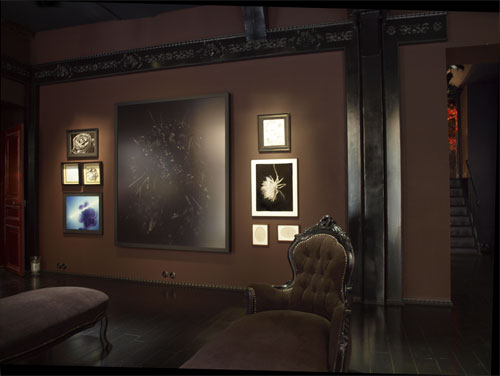
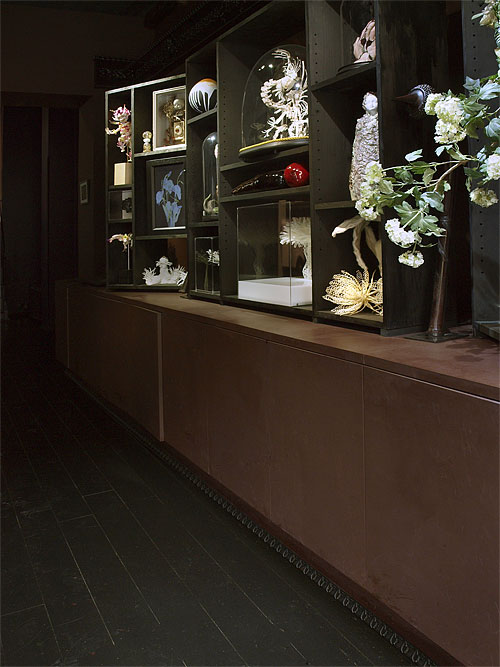

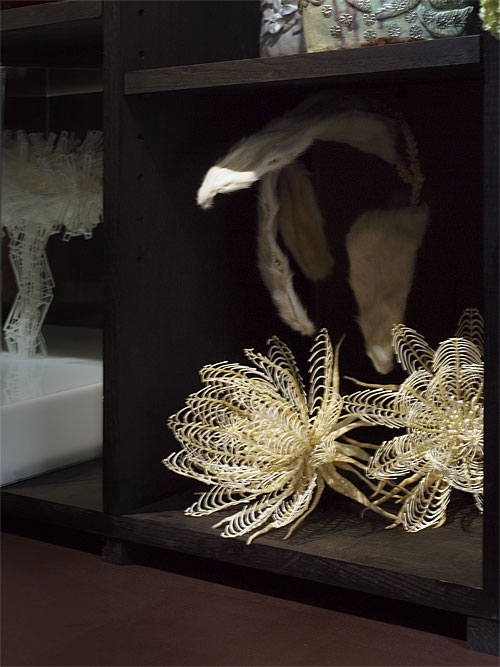
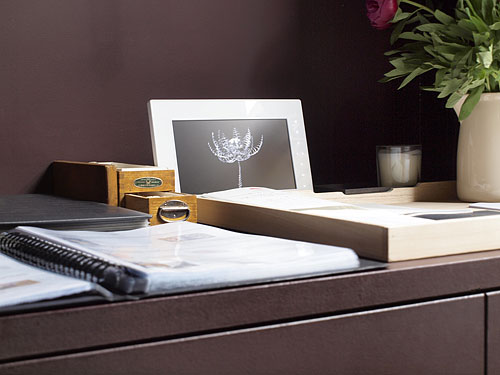
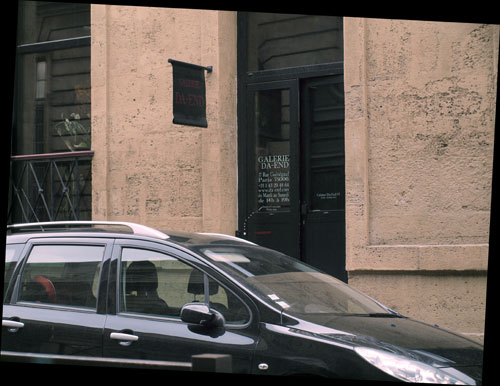
Art Fair
OFF ART FAIR 2013
April 19-22, 2013
Brussels, Belgium
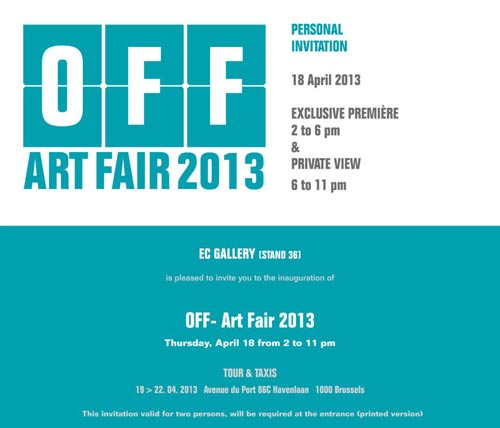
Solo Exhibition
HONEBANA (Bone Flowers) - Queen of the night -
April 5-20, 2013
LOWER AKIHABARA. , Tokyo
The " Queen of the night " was exhibited.
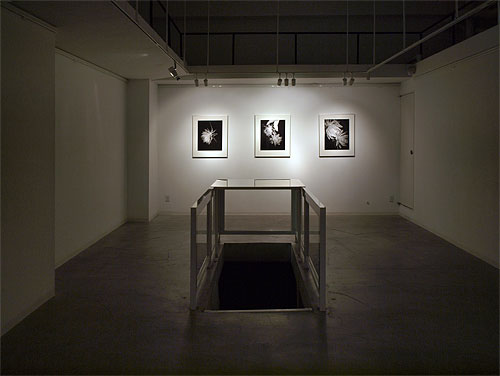

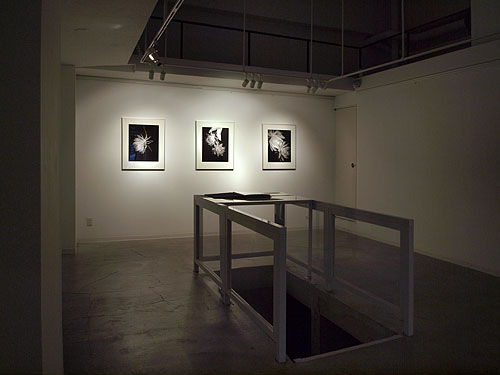
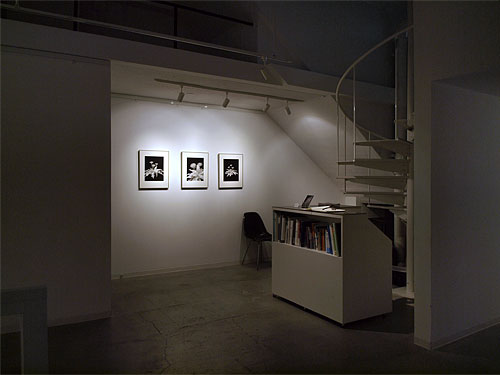
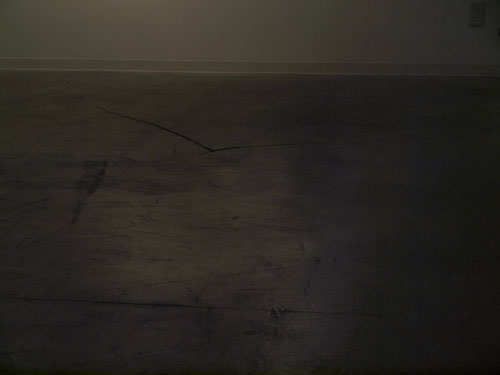

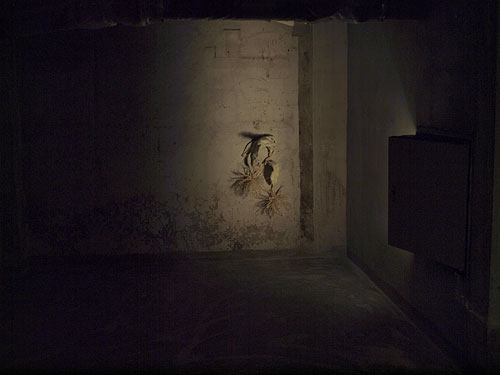
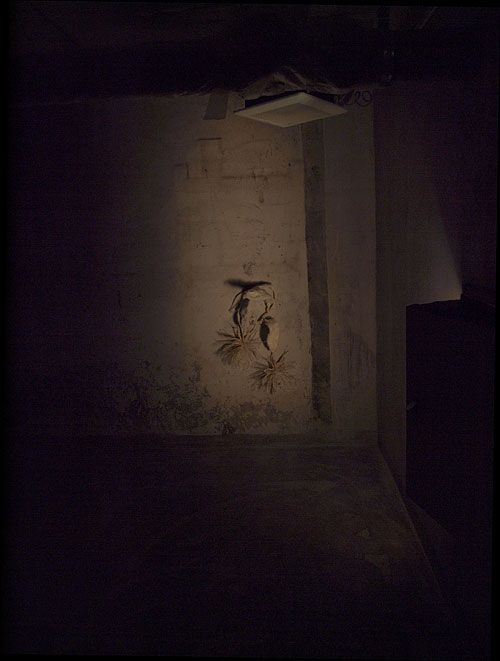
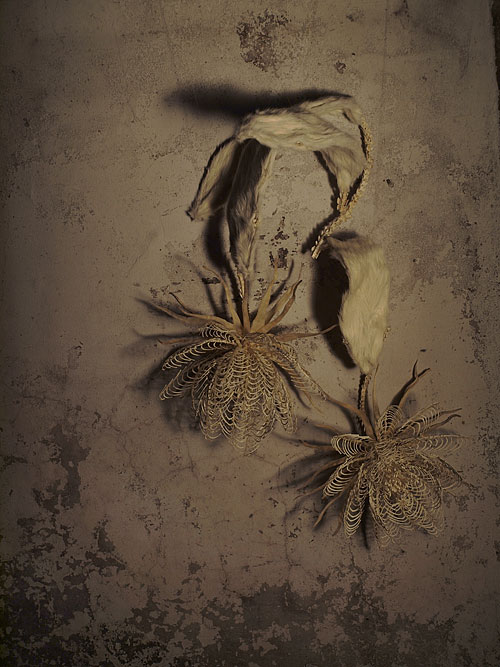

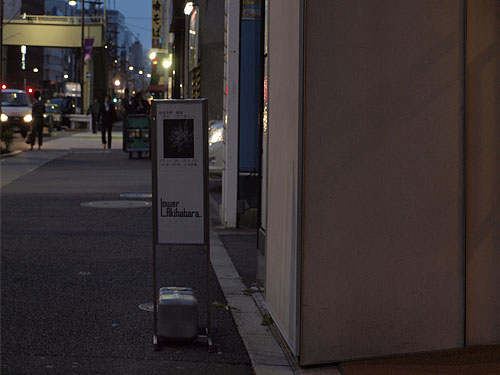
Art Fair
Affordable Art Fair NYC
April 3-7, 2013
New York
The " Camellia " was exhibited.
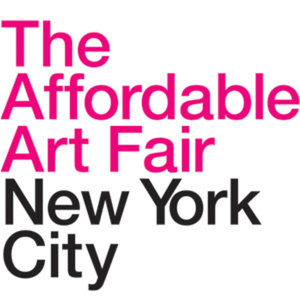

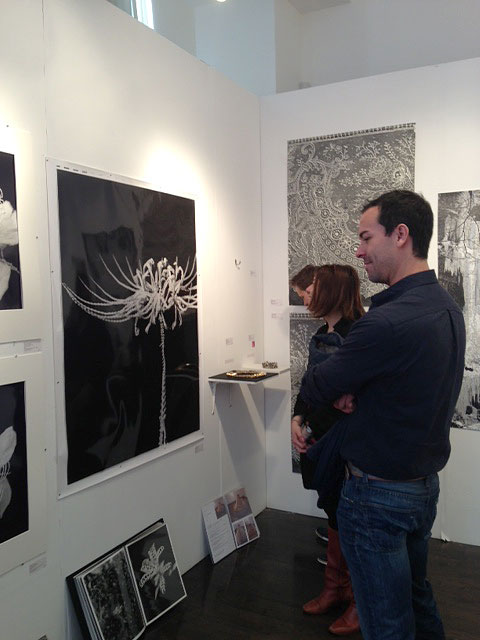
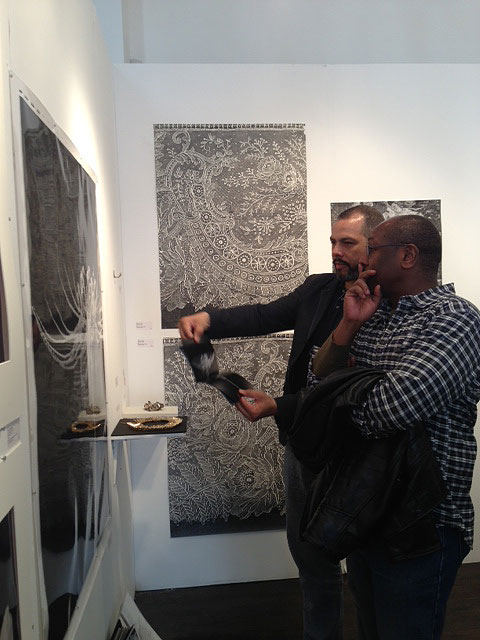
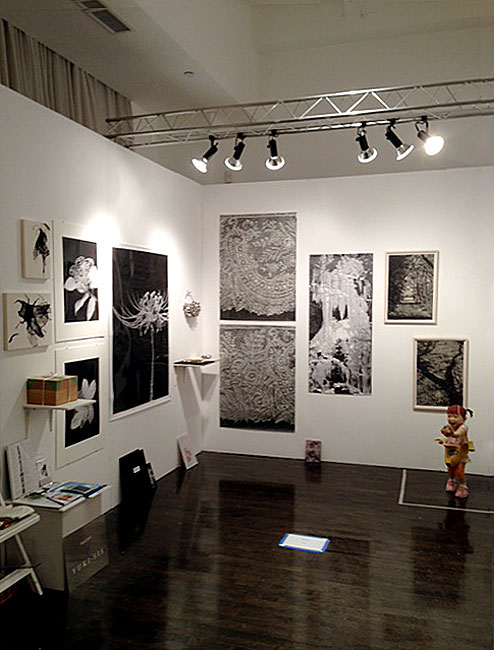
The Process / Leave Images
The " Dandelion "
March, 2013
The Process / Break, Return to the Earth "Dandelion" >>
The Process / Make Flowers "Dandelion" >>
The Process / Leave Images
The " Camellia "
March, 2013
The Process / Break, Return to the Earth "Camellia" >>
The Process / Make Flowers "Camellia" >>
The Process / Make Flowers
The " Camellia "
March, 2013
The Process / Break, Return to the Earth "Camellia" >>
The Process / Leave Images "Camellia" >>
TV Show
ART is AHO!#4
March 1, 2013
Fuji Television, JP
The Process / Make Flowers
The " Queen of the Night "
January, 2013
Text
Statement | 2013
My work is called 'Honebana'. 'Hone' means bones and 'Bana (Hana)' means flowers in Japanese.
I create flowers using bones out of dead animals and take photos and then bury under the soil after breaking it.
Why do I do that? Nature has a systematic cycle - spring comes after winter, flower blossoms and die, evening follows morning, life returns to soil and reborn - .
My work is an attempt to synchronize with nature's cycle.
Emerging director's art fair
ULTRA005
October side, October 27-30, 2012
Spiral Garden, Tokyo
The " Dandelion " was exhibited.
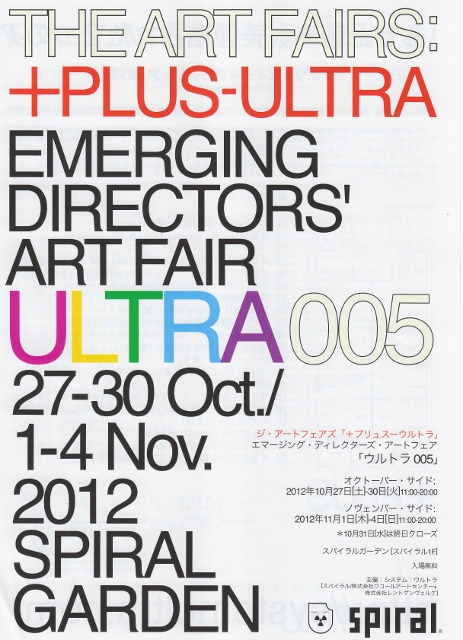
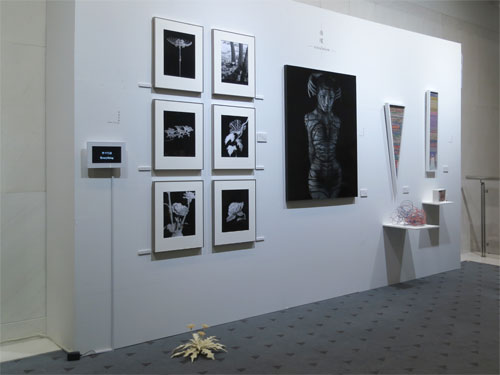
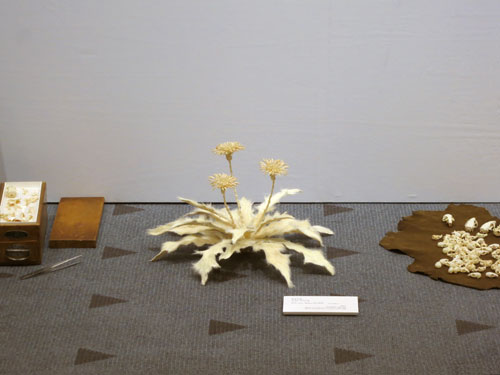

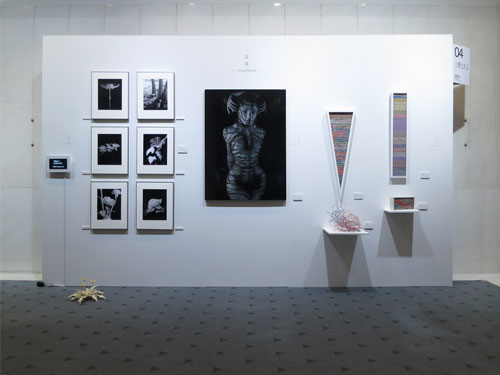
The Process / Make Flowers
The " Dandelion "
October, 2012
The Process / Break, Return to the Earth "Dandelion" >>
The Process / Leave Images "Dandelion" >>
The Process / Break, Return to the Earth
The " Hydrangea "
October, 2012
text archive "Hydrangea" >>
The Process / Make Flowers "Hydrangea" >>
Group Exhibition
Magnetic Field Resonance
September 22-October 13, 2012
Gallery YUKI-SIS, Tokyo

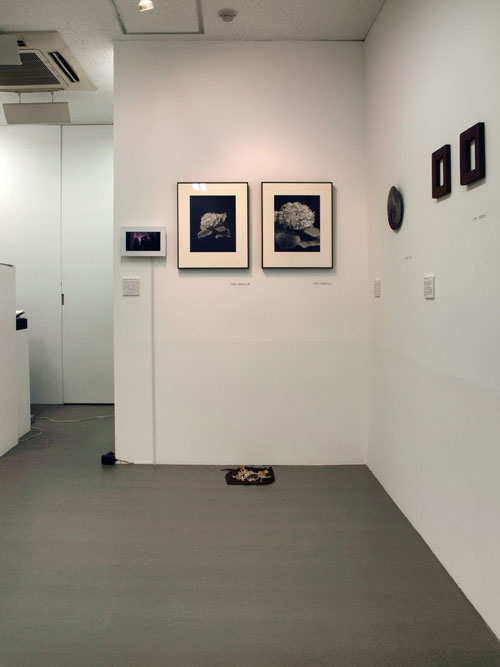
The Process / After That
The " Morning Glory "
August 20, 2012
(from K.)
The first flower of Honehana morning glory bloomed. I was anxious. It's because time was late.
This is a part of the concept of the other day's the Art Japanese Tea Ceremony.
The fragment of Mr. Hideki Tokushige's art work "morning glory" is buried under this soil.
That is what broke with everyone after we were admiring in the tea ceremony.
A floral change in a morning glory is really quick and is surprised.
text archive "Morning Glory" >>
The Art Japanese Tea Ceremony >>
text archive
The "Morning Glory", 2012
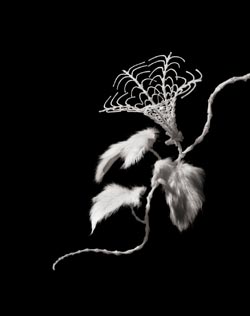
I decided to make "Morning Glory" when I accepted the invitation to work in collaborate with a Tea Ceremony. I had taken into account the famous story about Sen Rikyu,"One Morning Glory". One day, Hideyoshi heard that there were lovely morning glories blooming in Rikyu's garden. When he went to see them, he did not find even one. When he entered the tea-ceremony room, he found just one morning glory being displayed in its alcove.
This is expressing the transience which is the essence of flowers. Of the morning glories blooming in Nature, Rikyu discarded all but one and placed it in a man-made space. Symbolically, he had placed one solitary life on top of many deaths.The tea ceremony is not something that puts on air. We are aware of that because we know that it was in full flourish during the bloody Period of the Warring States, a time when death was imminent.
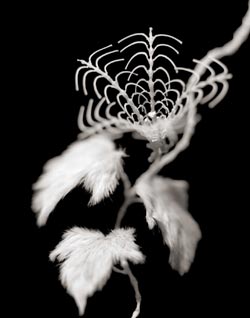
At the tea ceremony, after the ritual admiration of the "Morning Glory", I had the participants scatter the petals with their hands. Afterwards, I enclosed their bone fragments and the seeds of the morning glory in envelopes and sent them to the participants, asking them to plant the contents. They all sent me letters when the morning glories came into in bloom. Even though there was no longer any sign of the "Bone Flowers", the flowers were blooming, their seeds will continue to grow and bear flowers the following year and in the years to come. The "Morning Glory" will go on living.
The entire process of the "Bone Flowers", beginning with extracting the bones, followed by making the flower, leaving its image, breaking the flower and finally burying its fragments constitutes a work (of art). Inevitably an Ideal has been captured.
The Process / After That "Morning Glory" >>
The Art Japanese Tea Ceremony >>
Book
Photo magazine "SNAPPP" August issue
SNAPPP Publishing Inc.
Taiwan
July 2012
Melting Point
The Art Japanese Tea Ceremony
June 24, 2012
Gallery YUKI-SIS, Tokyo
The "
Morning Glory
" was exhibited.
Participants broke it.

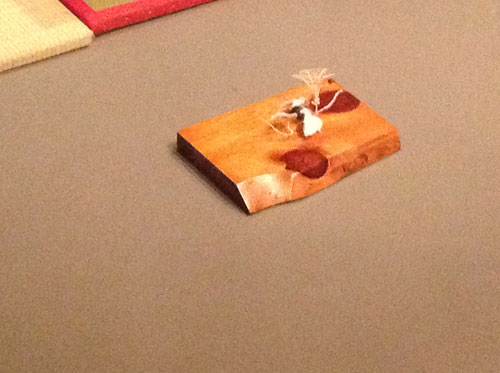

Report by Shuntaro Kondo >>
The Process / After That "Morning Glory" >>
text archive "Morning Glory" >>
text archive
The "Hydrangea", 2012
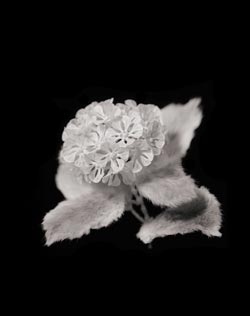
Azaleas are considered "rain flowers" because they bloom in the rainy season.
While I was working on "Azalea",I frequently went to see the azaleas nearby, so I came to know what kind of azaleas were blooming in what part of town. Even with the azaleas nearby, depending on the type, they are totally different in color, the color tone, the size and the shape of the flowers and the size of the leaves, etc.
I realized that even though I knew how the azaleas looked outside, I did not know their inflorescence or the basic makeup of their blossoms. I also learned for the first time that azaleas had two different types of blossoms: decorative ones and the actual ones.

For the flower, I used the scapulas (shoulder blades) of 127 mice.
When I assembled the "Bone Flowers", I began by observing its blossoms. For plants, how they look today will differ from how they will look in two days. My wishes to realize how the blossoms will look tomorrow, that is, how the blossoms will open up or how the leaves will spread out. are inherent in the way I structure them. I want to foresee that the azalea I am now structuring before me, with its appearance as it is at this moment in time will transform itself into something that I have anticipated two days later. Perceiving its potential and its realization is what facilitates my making of the flower.

I made the leaves for the first time with the tanned skin. I used them for the leaves of "Carnation". I decided to make them using the skin with a light brown tone, instead of one in white.
Compared to the works that I had produced until then, I felt that it clearly embodied the gentleness and calmness befitting the azalea that blooms in the rainy season.
The Process / Break, Return to the Earth "Hydrangea" >>
The Process / Make Flowers "Hydrangea" >>
Group Exhibition
Melting Point
June 16-30, 2012
Gallery YUKI-SIS, Tokyo
The " Hydrangea " was exhibited.
The Process / Make Flowers
The " Hydrangea "
June, 2012
text archive "Hydrangea" >>
The Process / Break, Return to the Earth "Hydrangea" >>
text archive
The "Cherry Blossoms", 2012
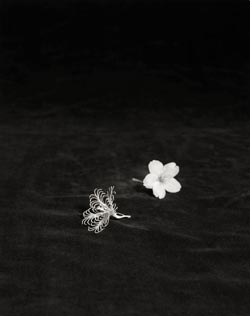
What does it mean to present my work, "Bone Flowers", to the public. It was not a matter of having an exhibition in a gallery or offering an appreciation of an art work dealing with the behavior or the process of "Bone Flowers" what I had in mind was to reconsider the ideal existence of "Bone Flowers" .
I wanted to synchronize the natural cyclical rhythm of the flower blooming and withering and the way of "Bone Flowers". With that thought in mind, I took the "Bone Flower, Cherry Blossoms" to a cherry blossom viewing to which I had been invited. I felt that it was most befitting to have an exhibition of the "Cherry Blossoms" under the cherry blossoms in full bloom whose petals were fluttering downward. I wanted to experience with those at the viewing how transient the life of "Bone Flowers" was.

I have heard the Japanese saying consisting of the words for winter and spring, matched with their respective homonyms "Fuyu wa fuyu . haru wa haru" , meaning "winter signifies increase and spring signifies expansion" The trees on the mountains seemed at first glance to be dormant during the winter but they are actually storing up natural energy within themselves, Thus we have "winter--increase". When trees are filled to the brim with energy , they burst open in the form of blossoms.
The saying, " spring --expand" is always meaningful to me at cherry blossom time.
The Process / Break, Return to the Earth "Cherry Blossoms" >>
The Process / Leave Images "Cherry Blossoms" >>
The Process / Make Flowers "Cherry Blossoms" >>
The Process / Break, Return to the Earth
The " Cherry Blossoms "
April, 2012
text archive "Cherry Blossoms" >>
The Process / Leave Images "Cherry Blossoms" >>
The Process / Make Flowers "Cherry Blossoms" >>
The Process / Leave Images
The " Cherry Blossoms "
April, 2012
text archive "Cherry Blossoms" >>
The Process / Break, Return to the Earth "Cherry Blossoms" >>
The Process / Make Flowers "Cherry Blossoms" >>
The Process / Make Flowers
The " Cherry Blossoms "
March, 2012
text archive "Cherry Blossoms" >>
The Process / Break, Return to the Earth "Cherry Blossoms" >>
The Process / Leave Images "Cherry Blossoms" >>
text archive
The "Carnation", 2011-2012
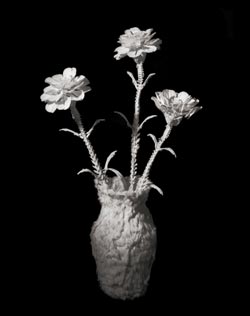
This time, I used not only bones but fur as well for the first time.
I made a vase from the fur and three carnations from the bones taken from the same mouse.
Even when we wear fur coats, we usually do not know how the fur was made.
"Tanning" is the process that prevents rotting and the fur hairs from falling out.
Fur hardens and shrinks after drying.
I made the vase taking advantage of this effect, but it was difficult to create shapes using only fur.

In our society, there are all kinds of lines of demarcation.
In the extracting of bones, there is a process in which one boils the bones. When I first started to carry out this process, I had a pot ready for its exclusive use, one differentiated from the one I used for cooking. However, gradually, I became aware of the fact that the line of demarcation between these two pots had become vague. I found myself with these thoughts and questions -- The pot for cooking was for boiling beef or pork, while that for bone extraction was for boiling mice. What was the difference? I felt what was in the former was delicious and what was in the latter, sickening. The people in South America roasted rats whole and ate them as delicacies. Depending on the culture, the line of demarcation changes.
Cultural lines of demarcation are not fixed. They shift. Art has the power to actualize those lines of demarcation by shaking them up.
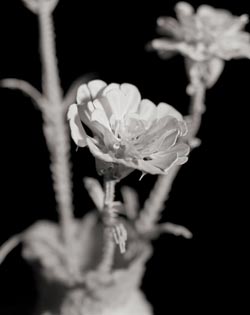
After extracting the bones from the mice, I made a vase with his skin.
I had not use any support because it would be returned to the soil. The tanned skin alone was used to form the vase.
For the first time, I learned the method of tanning, something man had known as a matter of course since time immemorial in order to survive. I often realized as I worked how ignorant I was.
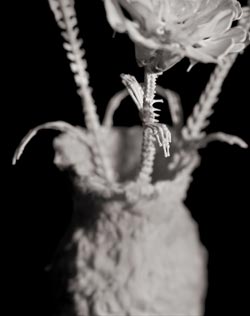
I exhibited "Carnation" in Taiwan. It was my first exhibition abroad but its reception was surpassed my expectations.
The concept of "Bone Flowers" embodies my view on life and death. In living our lives, we experience many partings. They are painful but those who leave us in death will continue to live in our hearts. Their bodies will return to the soil, become part of flowers, grass and water and transmigrate. Therefore, death is not the end.
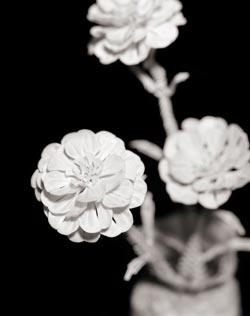
Both my mind and my heart can become empty when I assemble something with the bones. When my hands are moving, I have no conscious thoughts in my mind.
I deal with the animal that is abused in human society-- at times it is killed, at times it is spared. In our own world, too, we find so much sufferings and so much disappointments . That is why I want to create something beautiful. Beauty is power in itself.
Art Fair
PHOTO TAIPEI 2011
December 15-18, 2011
Taipei, Taiwan
The " Carnation " was exhibited.
Because it was an exhibition overseas, I couldn’t carry anything large, and thus created a folding tent that was a size I could check for the flight.
I didn’t know the height of the ceiling, so I made it adjustable.
The tent was the collapsible type meant for the umbrella and light of a photo shoot.
In order to separate it from living space, I wrapped it in white cloth.
Inside was the bone flowers, “Carnation” and its accompanying picture.
The picture was life-sized.
On the first day, I arranged them on the floor, and from the second day used the desk, but I wonder if the floor arrangement was better...
It was a hotel convention, so I put the flowers in a vase.
To explain the process of making these bone flowers, I set up a short slide show.
It was wonderful, Taiwan. I hope I get the chance to do an exhibit there again.
text archive
The "Azalea", 2010-2012
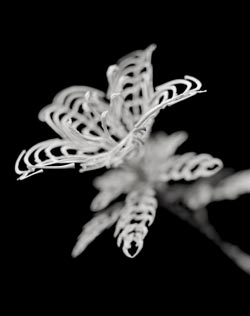
Until the fall of 2011, I had never exhibited my works. I had been spending my days going back and forth between my house and my work place where I was forklifting. I had no prospects in sight, such as putting on an exhibition.
I had continued with my work with no other thought than to leave something behind--something intrinsically beautiful by its sheer presence. I became aware that I had been projecting myself more and more into the fate of the frozen mice which human beings, to suit their own convenience, had killed for their pet food or spared them, I craved to at least make them beautiful.
It was this work, the "Azalea" that I was able to show to someone for the first time.
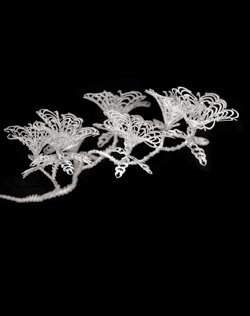
I have loved making things ever since I was a child.
Arts and crafts, plastic models, making robots out of candy boxes, anything...
Nowadays, all you need to do is to check the internet to find out how to make anything.
I wanted to make something that had no manual.
Something that nobody had done, which while odd, was also universal.
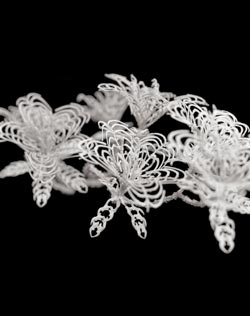
The stamen is the mouse's paw, the pistil its leg.
After creating four bone flowers works, the initial disgust I felt during dissection has gone.
The first time I took out bones was in 2004. It was of a raccoon dog lying dead in the street that I found while delivering newspapers in the early morning. I couldn't even touch it with my bare hands.
The raccoon dog had white parts to its eyes. They reminded me of my dear dog Issa back at home, and I couldn't even look at its face.

I love museums. Before I started "Bone Flowers", I went to the National Museum in Ueno.
There was an exhibition on the chronological events of the universe. It started with the birth of the universe, followed by the earth coming into being, life appearing and continuing to evolve. Further ahead, there was an exhibit of stone implements that marked the beginning of the tools made by man. I found them incredibly beautiful. I had no way of knowing whether the person who had made them had a name.
What I knew was that after countless centuries after he made them, I was moved by them. I felt that I wanted to make something timeless and powerful like them. I wanted to make something that if I could show it to him across the ages, it would be understood by him without the use of language.
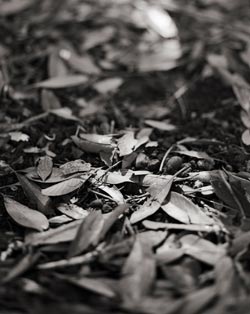
Bone Flowers of the Azalea was buried.
Climate differs depending on the locality. There are differences in the way the wind blows, in the way the soil feels, (whether it is dried or whether it is moist),in the seasons and the weather.... When indigenous natural conditions change, culture changes. When culture changes, what man does and what exists in nature change.
Lives that originated in the sea came on land, somehow found a way to function well with the new environment and lived to this day. One could say that the environment transformed how Man lived.
Life begins but it is bound to come to an end and to return to the soil, only to undergo a cyclical transformation through the soil, the wind and the water. If one could extract those indigenous natural conditions, exercising great caution to keep its form intact, one would be able to approach its origin.
The Process / Make Flowers "Azalea" >>
The Process / Leave Images "Azalea" >>
Award
YOUNG ARTISTS JAPAN Vol.4 Grand Prix
October 2, 2011
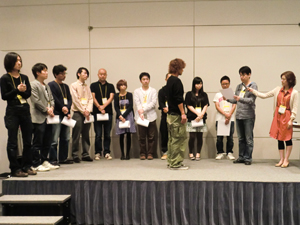
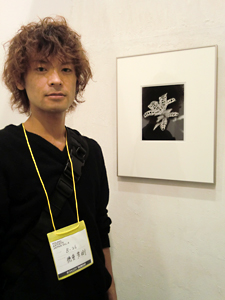
Art events
YOUNG ARTISTS JAPAN Vol.4
September 30 - October 2, 2011
Laforet Museum Roppongi, Tokyo
The " Azalea " was exhibited.
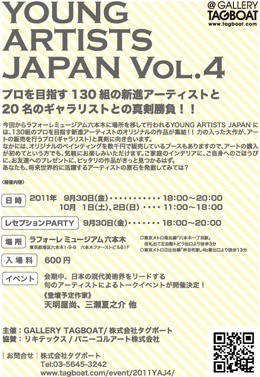
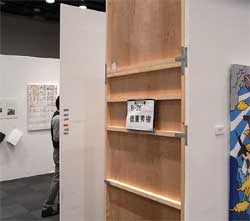
My First “Bone Flowers” Presentation.
Because it was a hall displaying many different pieces of art, in order to isolate my space, I set up the exhibit so that from the outside, you couldn’t tell what was inside.
I surrounded the booth with planks of wood?haphazardly, a temporary shelter.
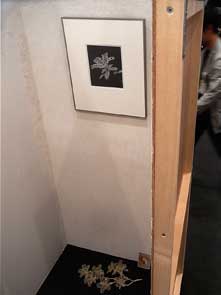
Upon passing through the planks, to hide the inner space was a white wall in the shape of a backwards ‘C’.
I made the wall to look like plaster.
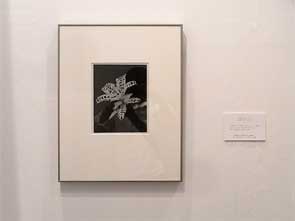
The very first thing that a visitor would see was a picture hanging on the wall.
And if you looked lower…

There it was, right at your feet.
There were many people who never looked lower, simply staring at the picture, and many times it came close to being stepped on.
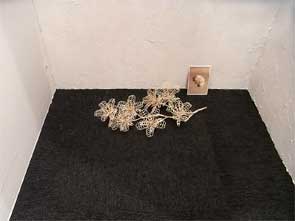
I had arranged it on the floor.
I had thought of several ways to arrange my exhibit because I wouldn’t know the color or style of the hall’s floor until I got there.
I chose the floor arrangement because the grey carpet would highlight the bone flower.
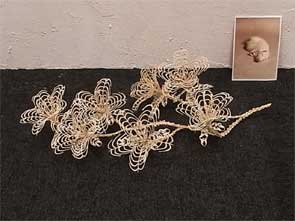
Seven azaleas.
And next to them, the picture of a frozen rat.
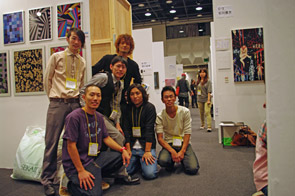
I found much inspiration, and my interaction with the other exhibitionists greatly encouraged me.
The Process / Make Flowers
The " Azalea "
June, 2011
text archive "Azalea" >>
The Process / Leave Images "Azalea" >>
Text
Statement | 2011
Why I use bones? Some might think it weird.
Art activity of human being, such as painting and sculpturing, goes back around 70000 years ago.
Mankind and bones have been good friends for very long time, many products out of animal bones have been found from the stratum of those ages.
Human history is the history of manufacturing. For 70000 years mankind has been producing things.
Everything that consists our modern life including those clothes, nuclear power plants, and Internet have roots in those ancestor's fingers which worked bones into tools.
Mankind also have laid flowers to the deads since ancient times.
Surrounding the bones of extinct Homo neanderthalensis, pollen of those days are found.
Bidding farewell to the dead, what they meant when they put a prayer with the flower?
We have consumed meat and used fur and leather from ancient time, but now we don't see bones on the daily life anymore.
Still, someday we all go back to bones and back to soil.
In our world of lesser foresight, it is time to go back to the fundamental by re-thinking about the bones. And this may give us an opportunity to reconsider our unsteady passage.
Book
Zin
January 2011 first edition
1000 copies
The Process / Leave Images
The " Azalea "
July, 2010
text archive "Azalea" >>
The Process / Make Flowers "Azalea" >>
The Process / Leave Images
Process of Photography /
I use 4x5 inch film camera, take a long time to shoot like having a dialogue with bone flowers.
The Process / Take Bones Out
About bones and furs /
Do you know freezing mice? It is sold at the pet store as food, such as snakes and owls.
The frozen mouse which finishes a lifetime in the gauge under sterile and serves as a pet's food.
It would represent as well a sense of our modern view of nature and life.
It disassembled the one frozen mouse (and rat) at a time, and bones are taken out.
Also, it is the same mammals as us is also one of the reasons which uses freezing mice.
text
Work described
The flower as a momentary raw sign which withers someday.
The work which imitated the flower to the bone of the animal which carries out death.
After the shooting increased, it will be broken and will be returned to the ground.
text archive
The "Lily", 2009-2010
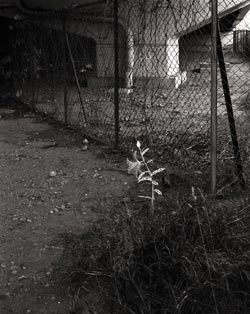
Plants and animals evolved separately from ancient times.
Plants first started growing on land, and were followed by animals after a while.
While the evolutionary process is different, both require a physical structure which supports the body against gravity.
Plants are supported by the roots which are extended into the ground, while animals chose the path of being supported by their skeleton or exoskeleton.
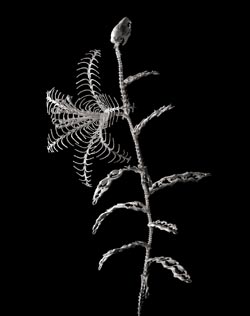
The upper skull was used to make buds.
It is hard to see in the small image, but in two places on the stem - toward the middle and near the bottom - the pelvis has been used as is.
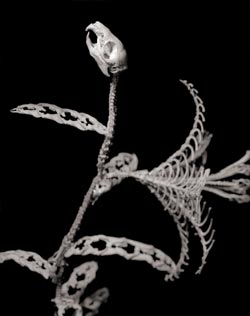
Through dissecting mice, I am amazed by the curvature of mammal spines.
Compared to fish and reptiles, the spine curvature is extreme.
Humans straighten the spine to stand and have to support a heavy head, so it is no wonder humans get stiff shoulders.
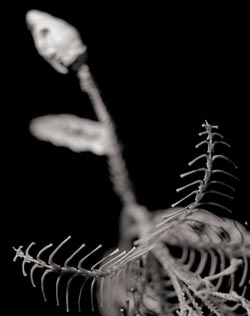
Indoor photography was done in my home. An old, two-story home.
The first floor is my creation space.
Bone extraction, assembly, photography, film development... all done in the same room.
The room is sealed for photography processes, so I lose all sense of time when working in this dark room.
I realize that it has somehow become time to go to my forklift job, and I often rush off.
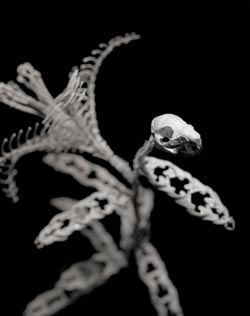
If you look at the lily bud, the volume of the flower about to bloom is packed in.
It has a different expression of strength from a flower in bloom.
A rat's skull was used.
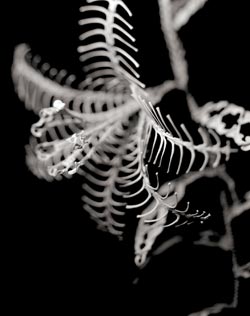
The bits attached to the ends of the six stamens are the small pelvises of mice.
The stamens are shin bones.
There is a saying, "Standing, she's a Chinese peony; sitting, she's a Japanese peony; walking, she's lily," but the shape of the lily, with its many bred varieties, seems artificial.
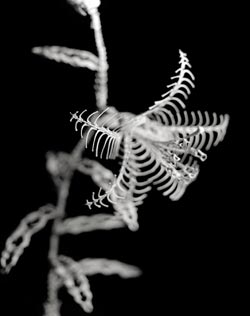
Mice and humans are both mammals, and their make up is similar.
Previously, I once extracted bones from a wild mouse, not a farmed mouse, that had been lying dead in the bushes near the station rotary.
The bones seemed to be completely different.
It was probably death from old age, and the thick bone-muscles told of the struggles and strengths during its lifetime.
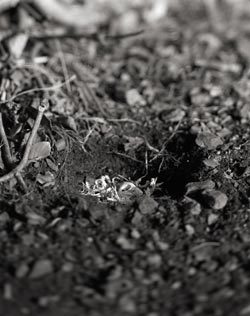
There is a canal right next to my home.
I often take breaks from creating at the bank of the canal.
The wind blows, leaves sway, the river flows, ants climb stems.
Whether I live or die, the world goes on...
The word "nature" best describes this feeling.
text archive
The "Lycoris", 2009-2010

Bone Flowers are fragile as they are just created with adhesive.
Many a time, after I composed the scene, measured the exposure, focused the shot, and just as I was preparing to shoot, the wind would blow, toppling the bone flowers and breaking it into pieces.
This time, I didn't have much opportunity to press the shutter with the clouds in the sky.
The sun shone briefly, and the spider lily appeared on the focusing screen upside down.
Praying that the wind would not blow, I held my breath as I pressed the shutter.
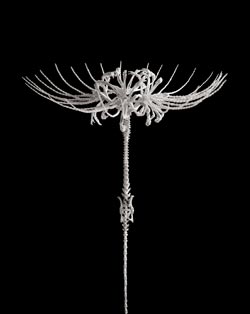
Lycoris are mysterious. They somehow bloom during the equinoctial week. They also have many regional names.
They have been called Manjusaka, Funeral Flower, and even the Haunted Flower. The English another name -Red spider lily -is fitting.

When I first started to anatomize, I was afraid of his hands and eyes in particular. In our everyday life, we read a person's feelings in the minute changes in his expressions. His hands and eyes, in particular, reveal how he felt. We perceive the minutest changes. We are able to read into the feelings of even a dead person before our eyes.

It seems that the Korean name for lycoris is "so shi ka", a name written with three characters meaning "mutual-love flower". It is said that this name is attributed to the fact that unlike common flowers, this flower has no leaves when it starts to bloom and when the leaves start to grow, the blossoms are no longer there. That phenomenon symbolizes that even when the leaves and the blossoms find it impossible to meet, they are longing for each other.

Bone Flower of the Lycoris was buried.
It return to the earth, and become the grass and the insects, the moisture and the light...
Flowers bloom in a land without death.
text archive
The "Lotus", 2008-2010
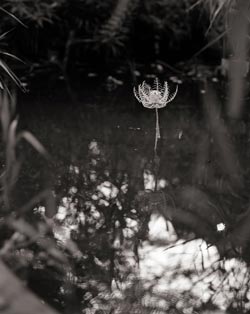
To make something out of bone...
In an evening during winter of 2008, it was raining while I was passing an intersection while on an errand to Ginza.
Taking shelter from the rain, I went into a nearby cafe, and gazed upon the intersection from the second floor.
The asphalt slick black with water, the glare of the tail lights of cars going by, the whirlwind of pedestrians...
And opening at that time, a colorful umbrella...
In the intersection, I saw the blooming of the "bone lotus flower".
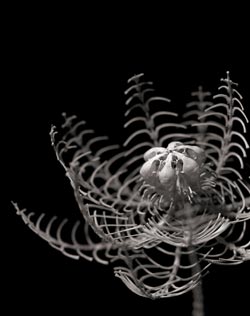
There was a lot of fumbling when first starting to make a flower out of bone.
How a flower could be made with just bone, without whittling anything away...
How it could be made to look like a flower and leaves...
There were only vague images.
Tranquil, like a piano song, or like a stone tool in a museum...
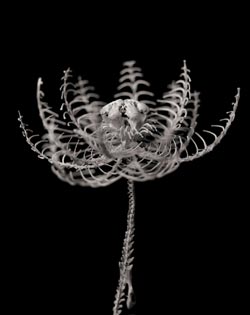
A large 4x5 inch camera was used.
When taking class photos as a child, a photographer would come using a black cloth to cover up.
I like being able to carefully adjust the tilt and focus while looking at a reverse image shown on focusing screen while taking pictures.
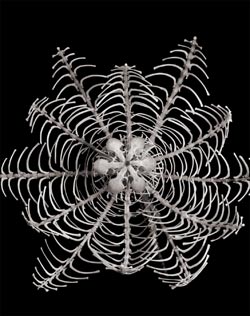
In the middle of the lotus flower, there is a projection which is the characteristic thalamus of the flower.
6 mouse skulls were arranged to represent the thalamus.
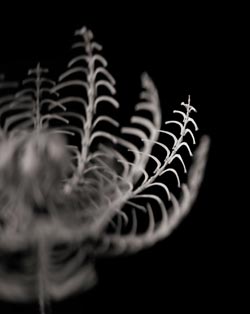
At first, I was troubled as to how to take the picture.
It is difficult to express flowers with bones which don't move.
Wind does not blow on the screen.
How to make the wind blow on screen…

After the flower petals are scattered, a fruit is formed in each one of the holes in the thalamus in the middle of the lotus flower.
The skull thalamus, and the mandibles that support it.
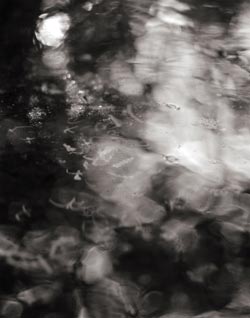
After pictures are taken, the bone flowers are returned to the earth.
The bone lotus flower, which blooms on the water surface, lies at the bottom of a pond.
The fragments of bone, rolling from side to side, sank faster than I expected.

